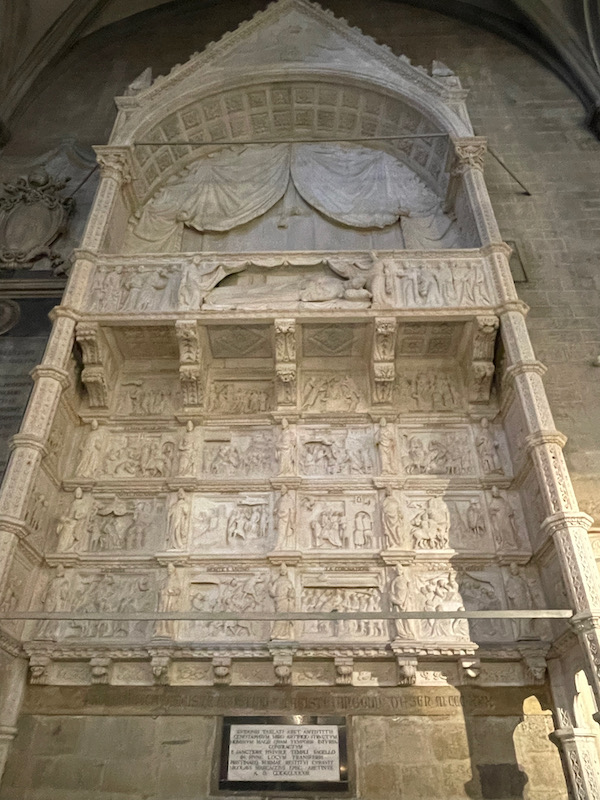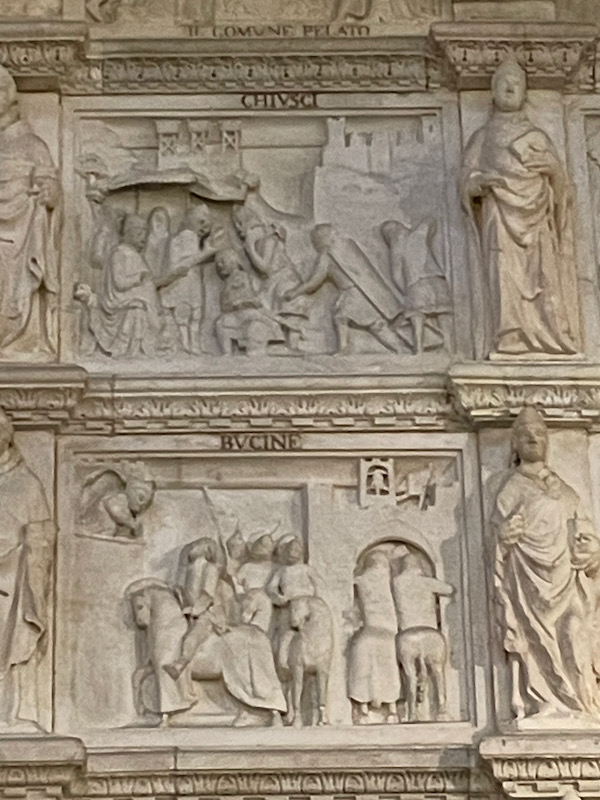Our Blog - Tuscany 2024 Trip - Arezzo, Italy
Officially our last place is Tuscany, Arezzo is a city of close to 100,000 people. Its history dates back to the Etruscans, and supposedly this may have been one of the 12 most important Etruscan cities. It was then conquered by the Romans in 311 BC before making the "normal" Italian city progression to becoming an episcopal seat (3rd-4th centuries). The Roman city was demolished, partly in the course of the Gothic War and of the late-6th-century invasion of the Lombards, partly dismantled, as in other places in Europe. The stones were re-used for fortifications. Only the amphitheater remained.
We got parked and checked into our B&B, and then we headed out walking. Our first stop was in front of the Post Office building just up the street, was inaugurated in 1929. It has a neo-Renaissance style but what caught my attention was the colored ceramic tile decorations over the windows at the top.
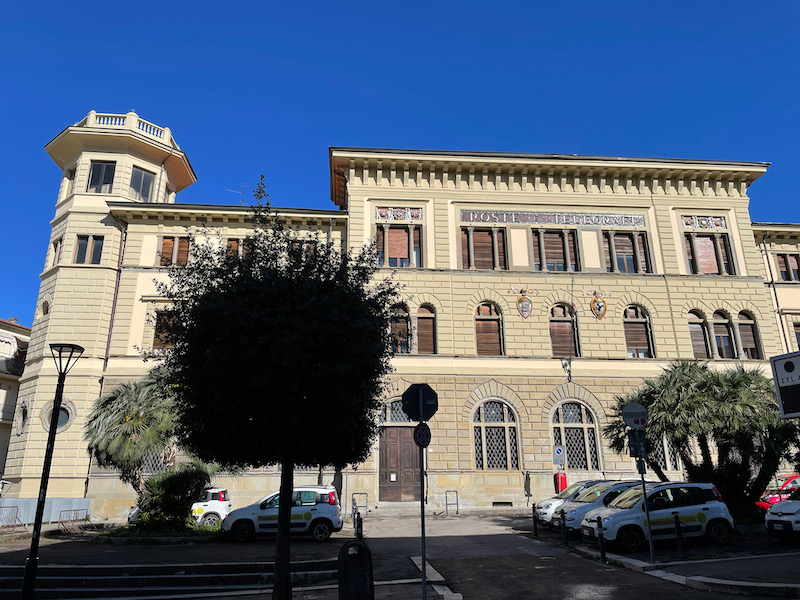
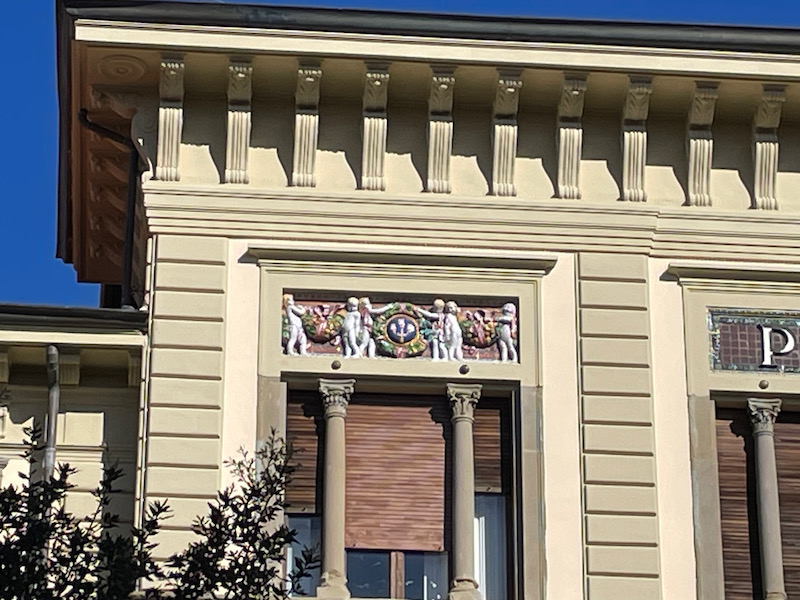
Basilica San Francesco is dedicated to St Francis of Assisi and it is renowned for the fresco cycle "Legends of the True Cross" in the chancel. Construction began around 1290 and the façade was never finished. There was a service going on, so I just grabbed a few pictures from the back, since I feel weird walking around taking pictures during a religious service.
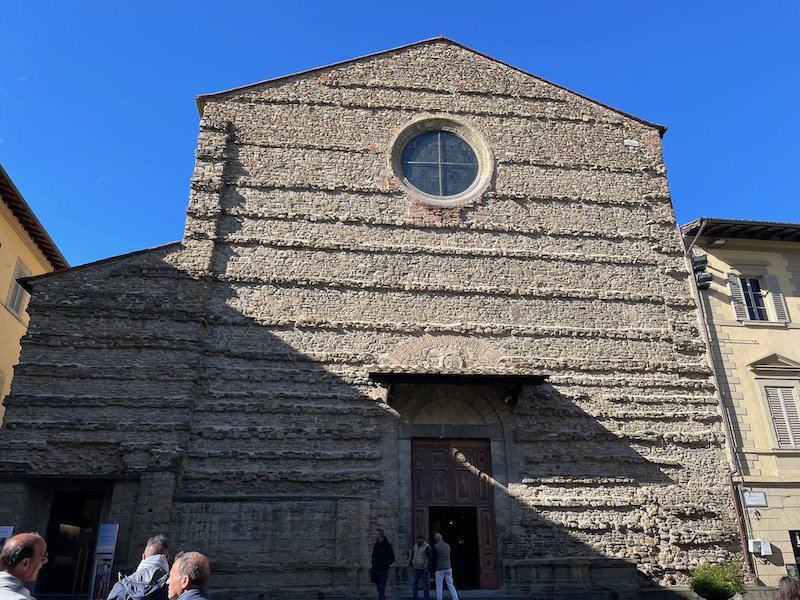
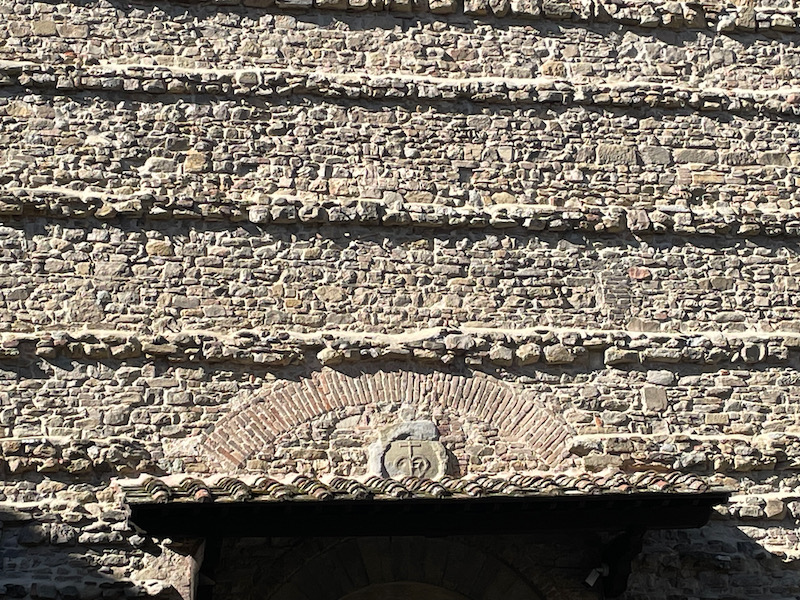
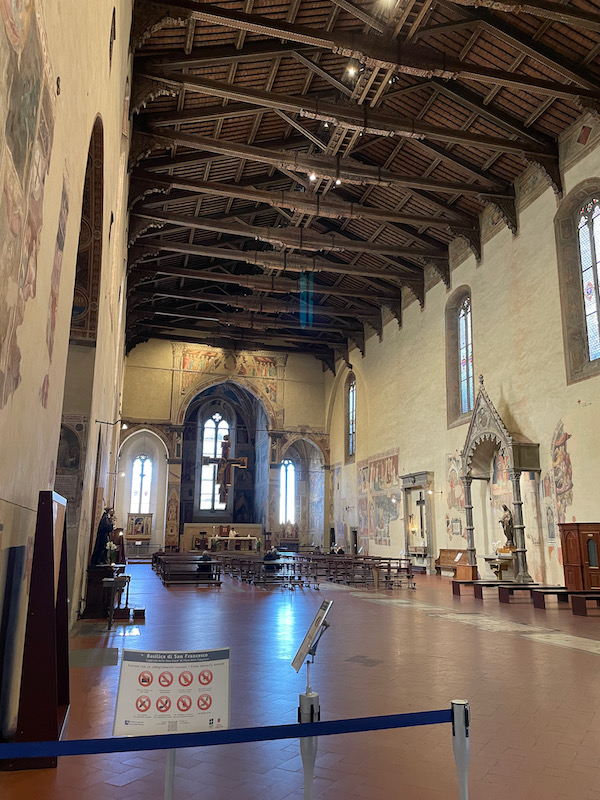
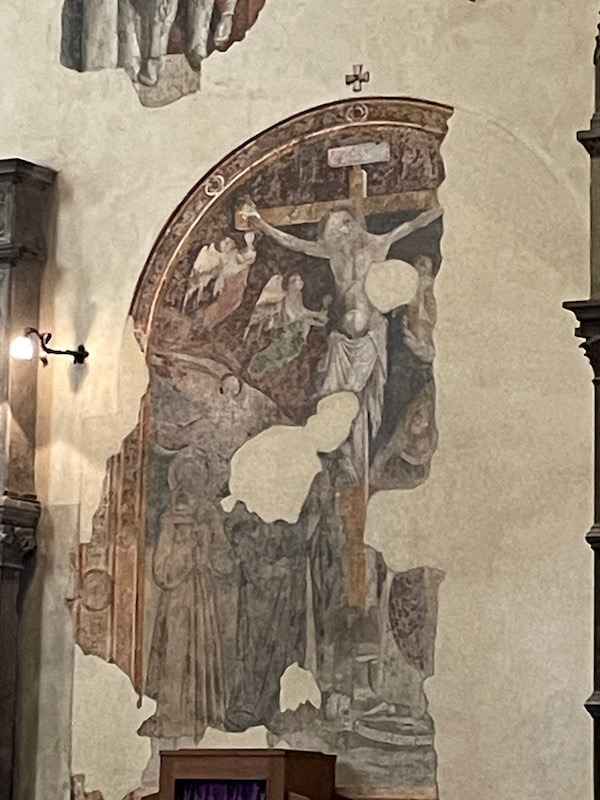
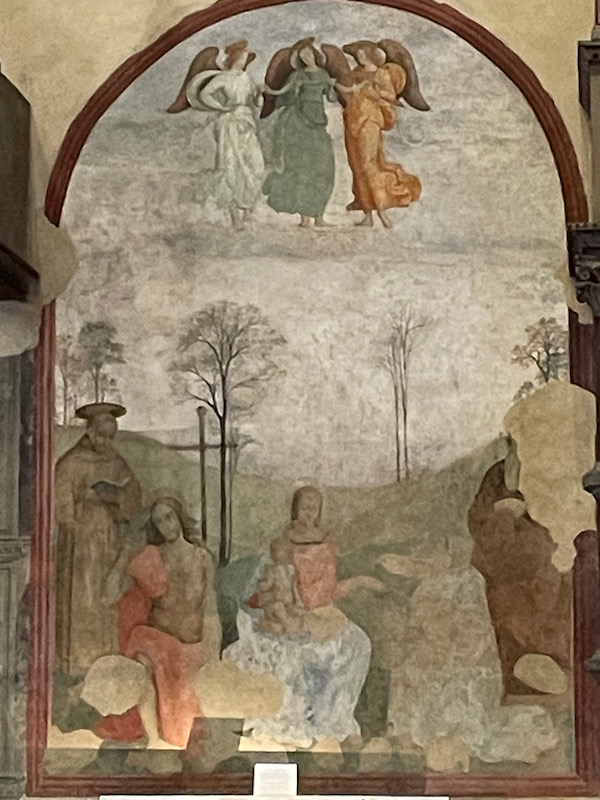
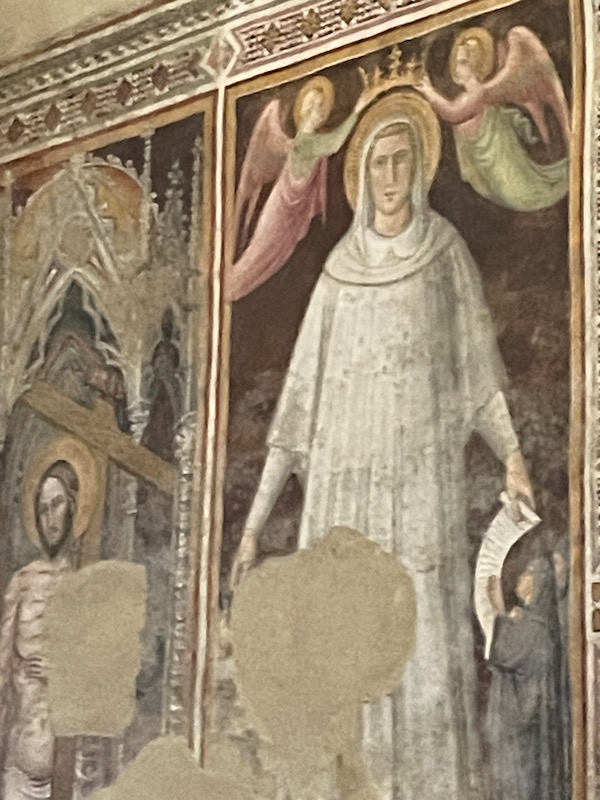
Just outside of the Basilica, we met up with 2 Italian corgis ... both quite a bit bigger than Lucy, and both with different colors.
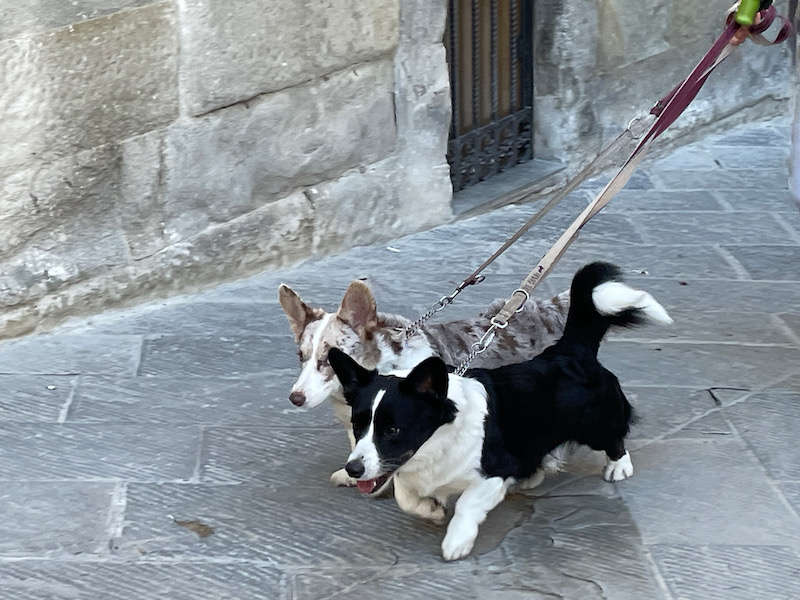
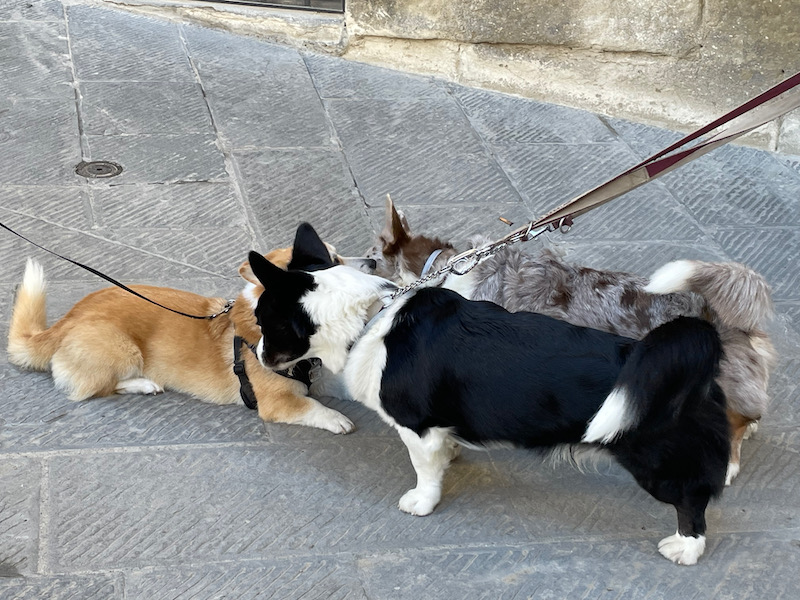
The Perelli Palace, built around the 13th century, was the home of the noble Marsupini family before becoming the headquarters of the Bank of Italy (it is no longer the HQ). The elaborate decoration comes from the 20th century although it looks stylistically like something from the 17th or 18th centuries.
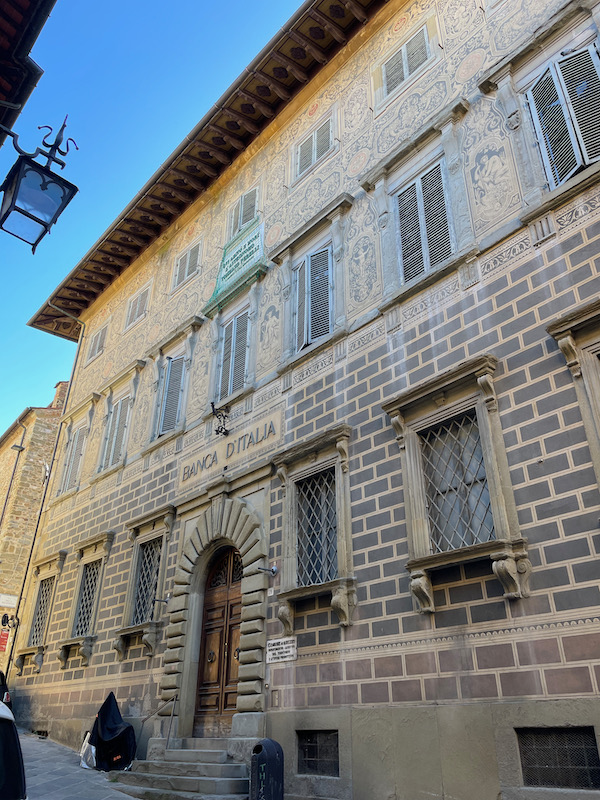
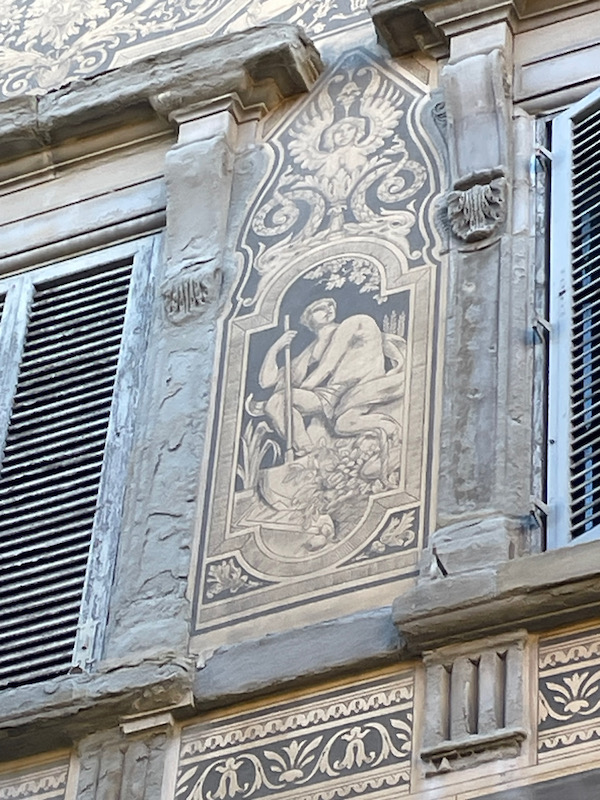
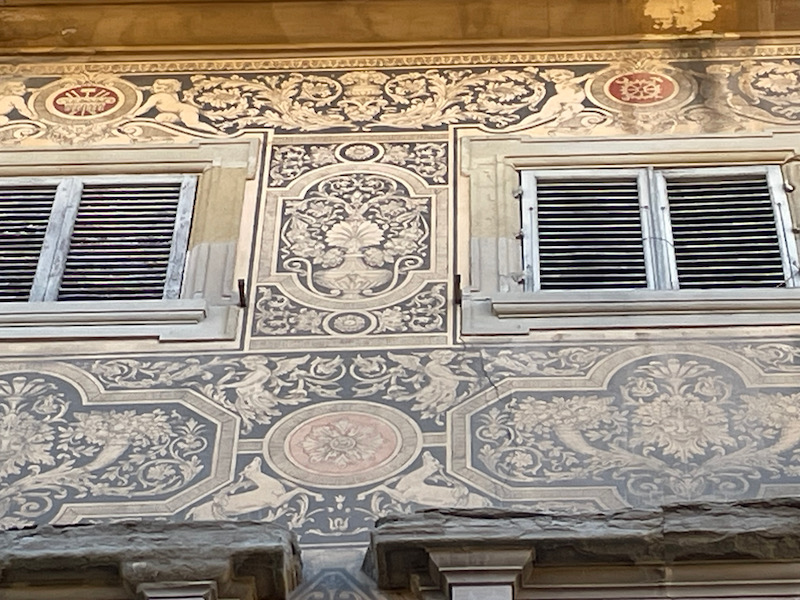
The Palazzo dei Priori, built in 1333, has always been the seat of the city's magistrates. The building has been restored and renovated numerous times, and it looks like there is additional working going on. The square clock tower is from 1337.
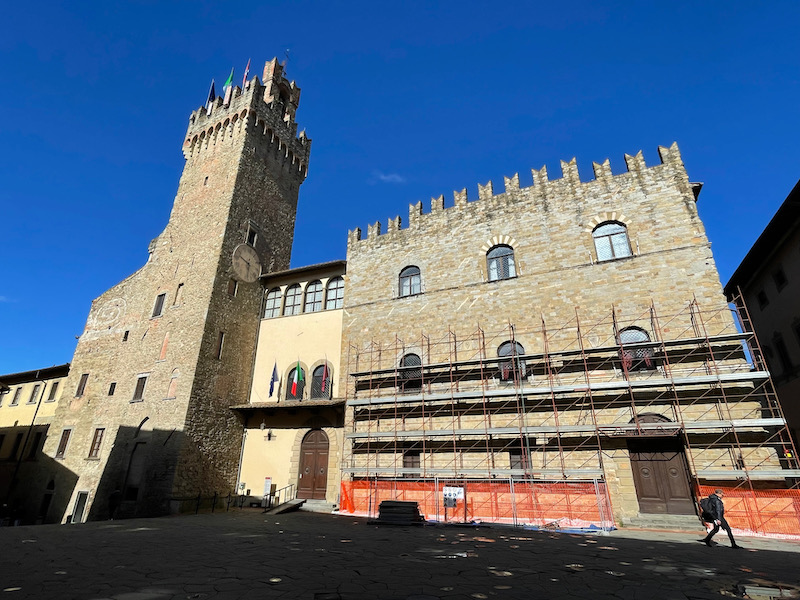
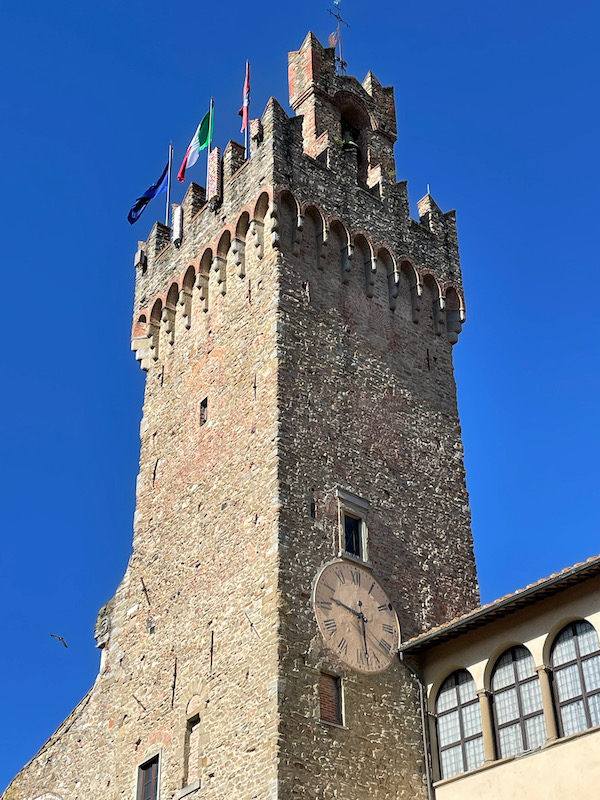

We made it up to the top of the hill to where the Medici Fortress stands, and got a nice view of the countryside below. Originally, this was the site of the Acropolis of the Etruscan city, then a fortified village, then a church, and an ancient 14th century keep. In the beginning of the 16th century, a new fortress was needed which was started in around 1502 at the request of Cosimo I de Medici. . There were rebellions in 1529 and 1530 which damaged parts of that fortress, and another plan was drawn up. This one was completed in 1540, incorporating some of the remains of the earlier fortress.
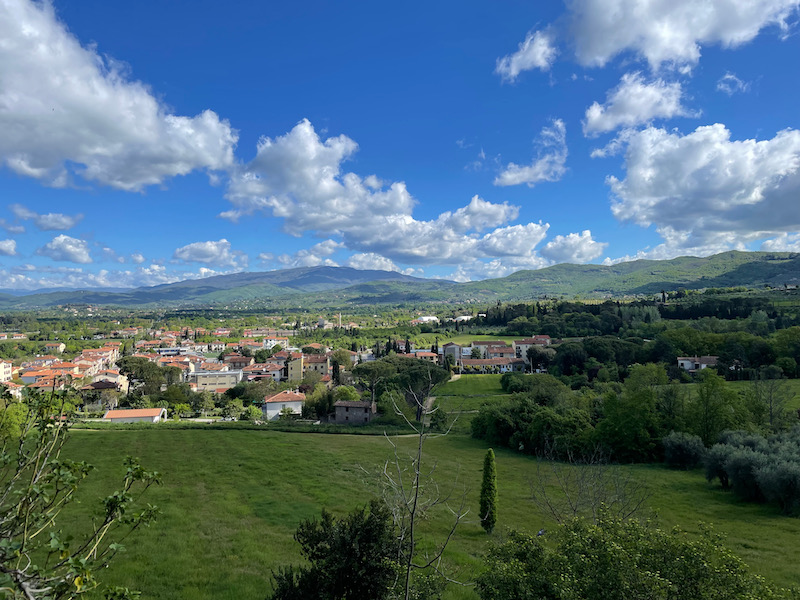
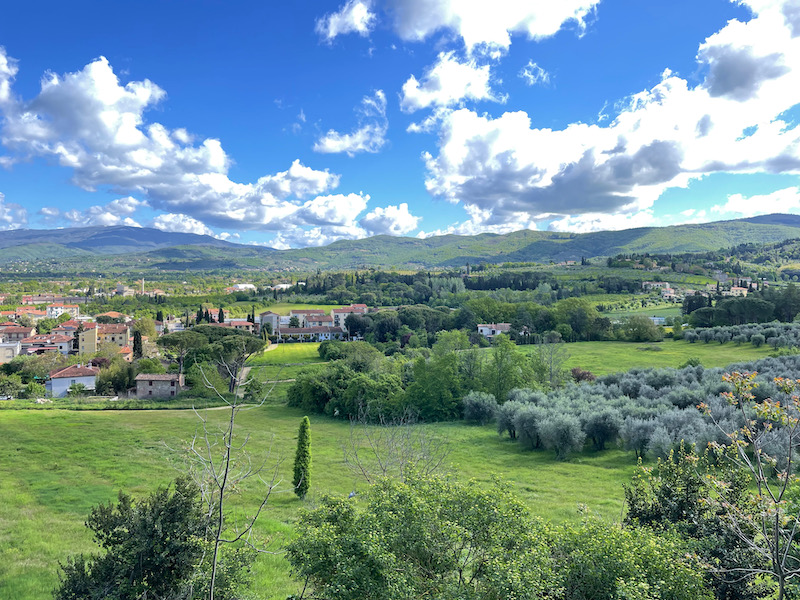
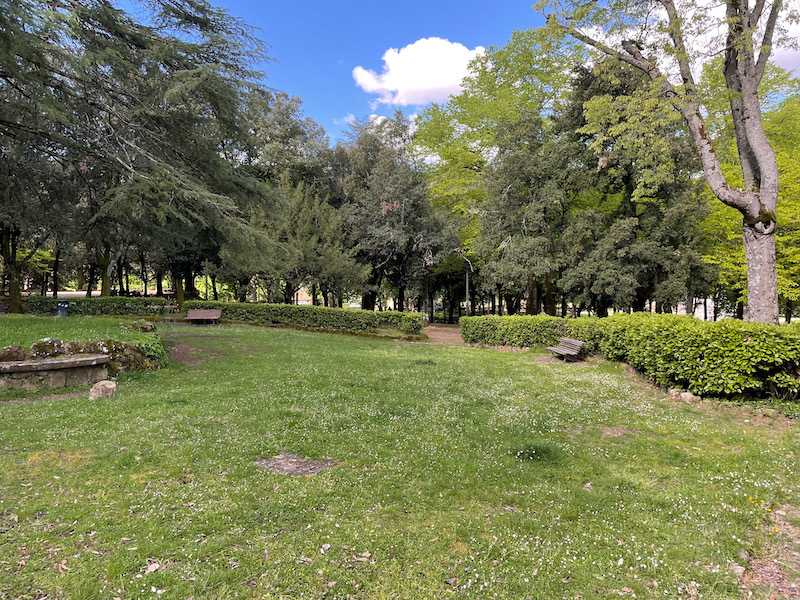
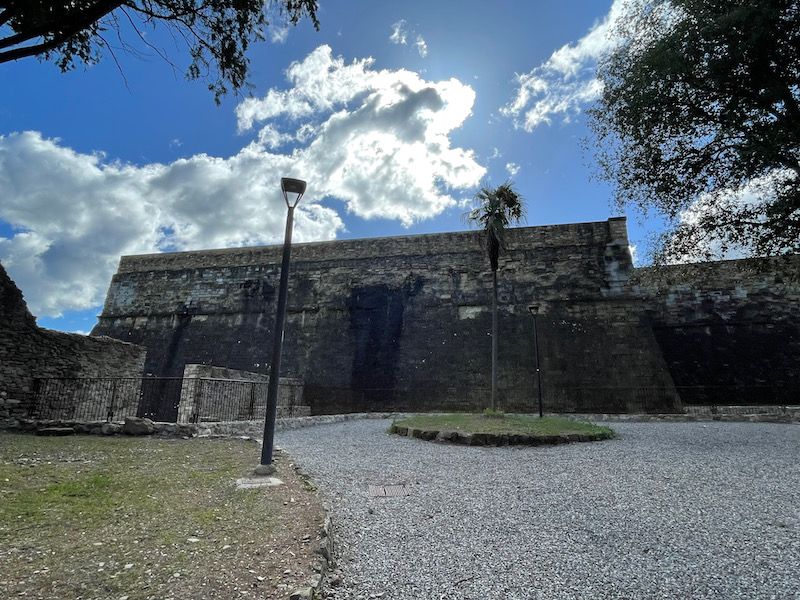
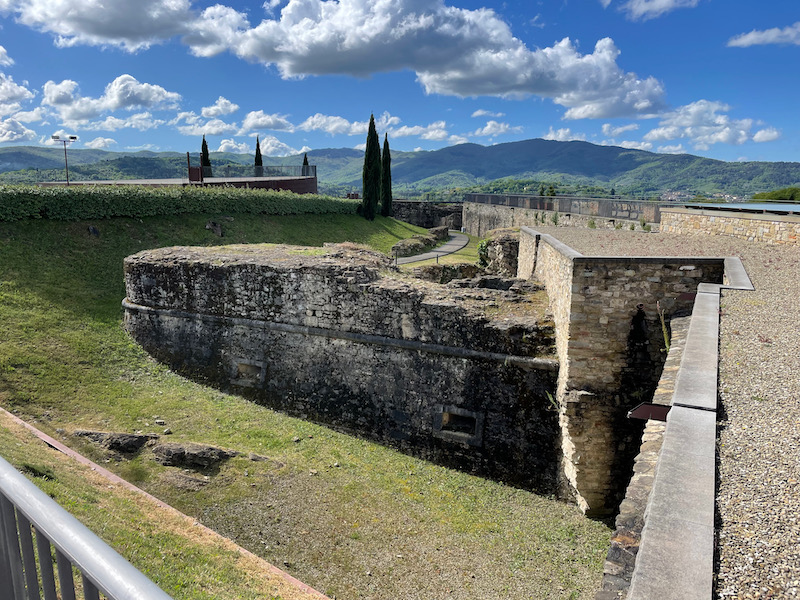
Here you can see how high the walls of the fortress were, and you can imagine that it was pretty easily defended.
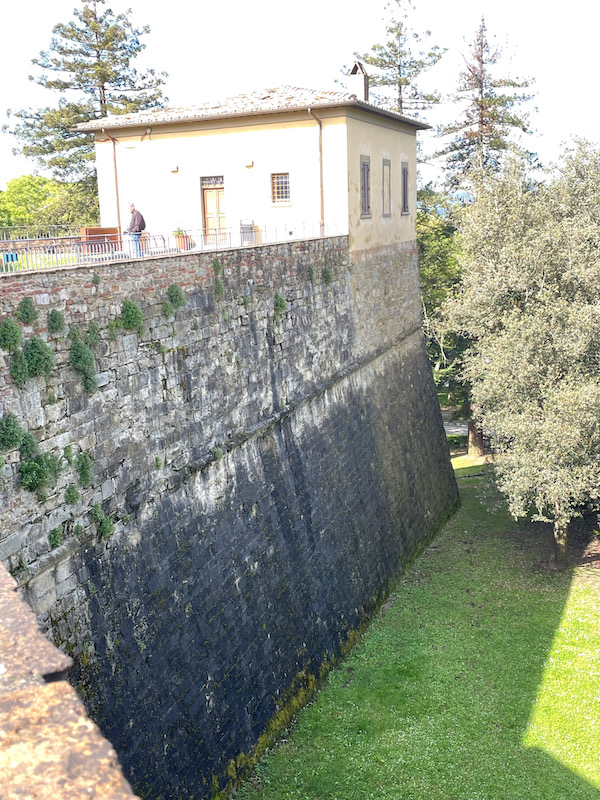
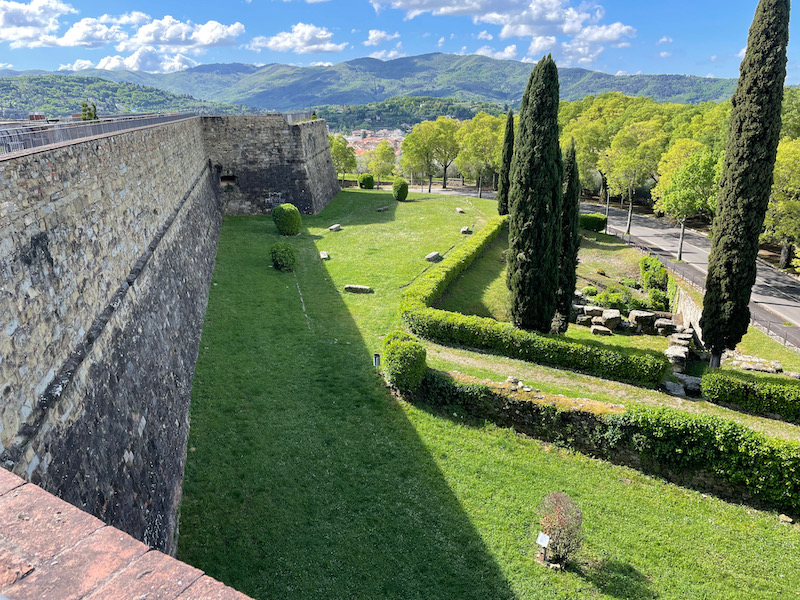
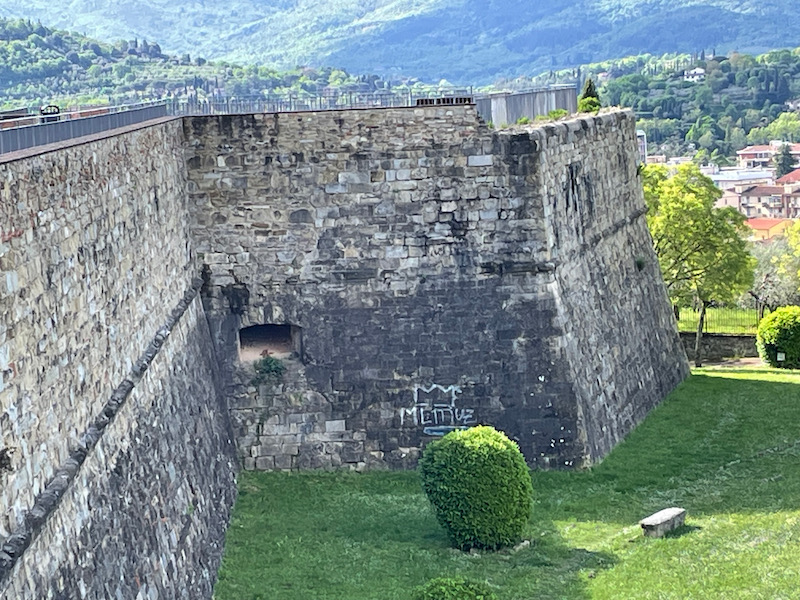
They did a nice job with showing what was left after most of the buildings inside the fortress were demolished in 1816 when it was sold and transformed into an agricultural estate.
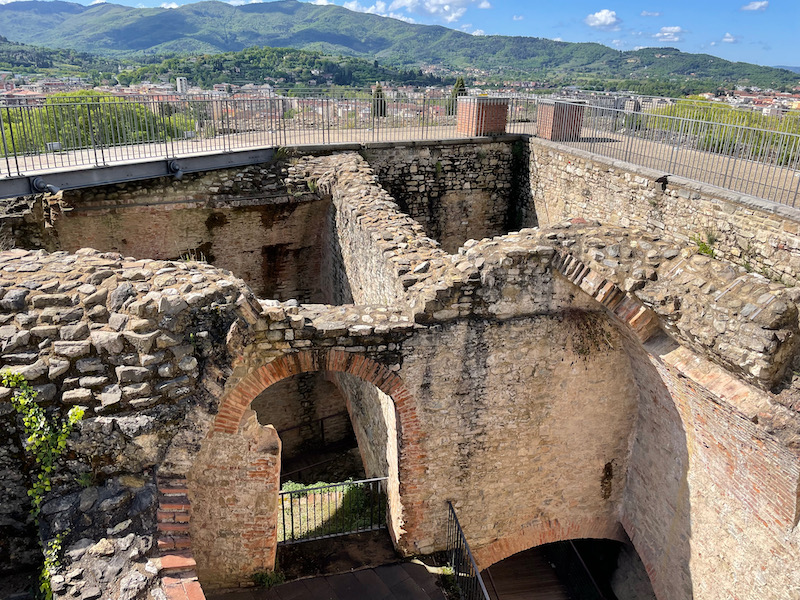
Just outside the bastions, they found the remains of an Etruscan building that can be dated back to the 2nd century BC.
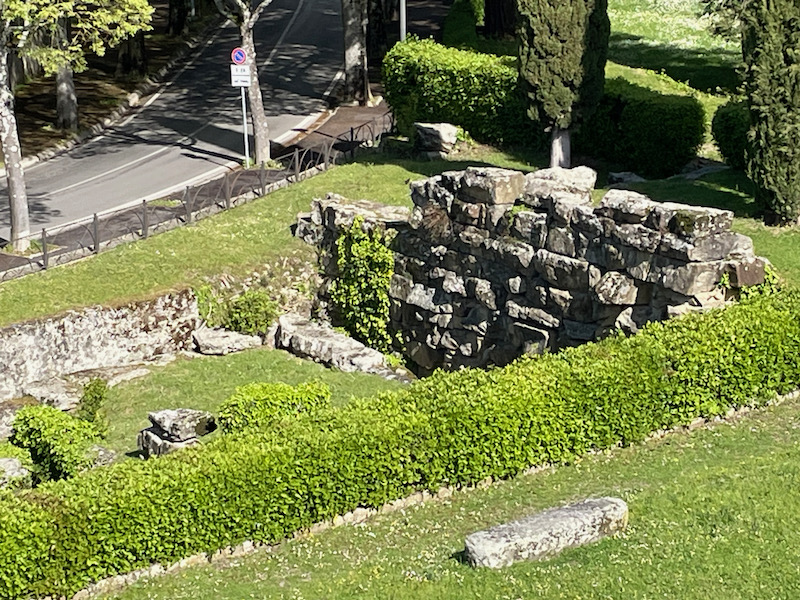
The Palazzo Pretorio was created by merging the 13th-century palaces of 3 Guelph families (Guelph is one of 2 opposing factions in Italian politics in the late Middle Ages). The façade features numerous coats of arms from the first half of the 15th century.
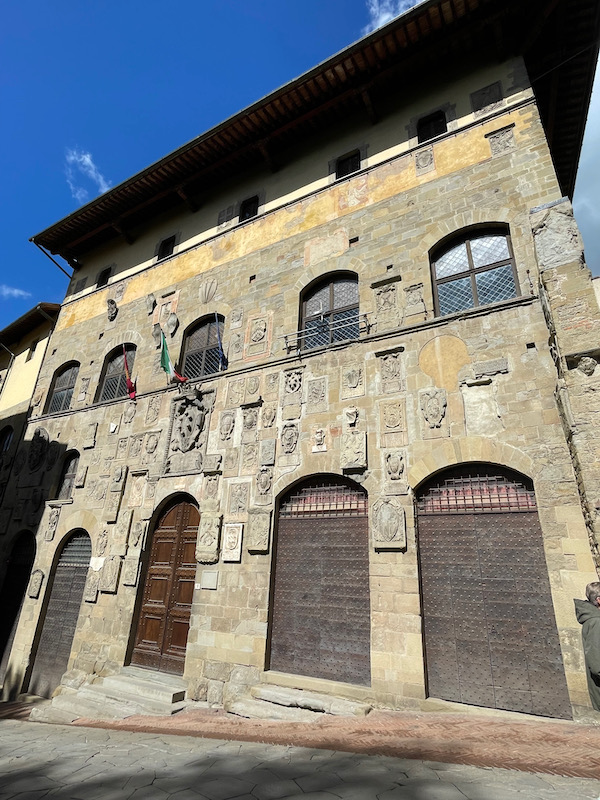
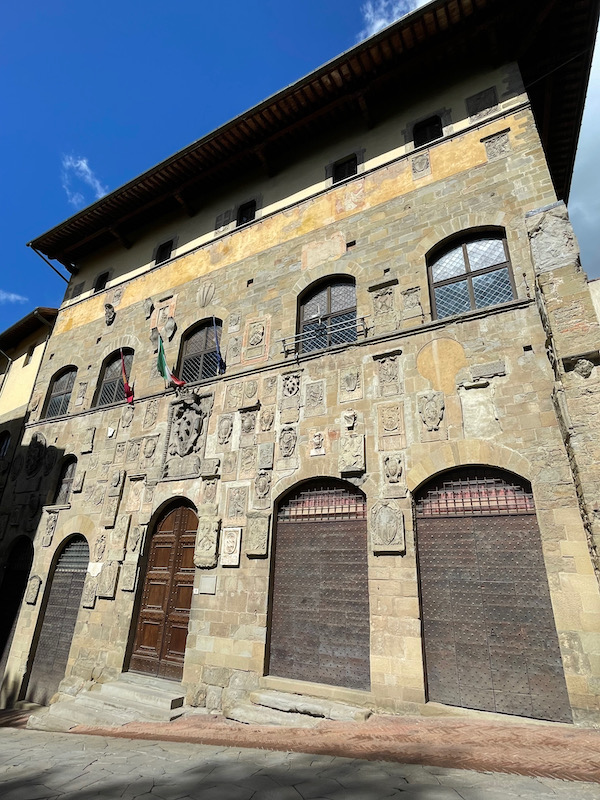
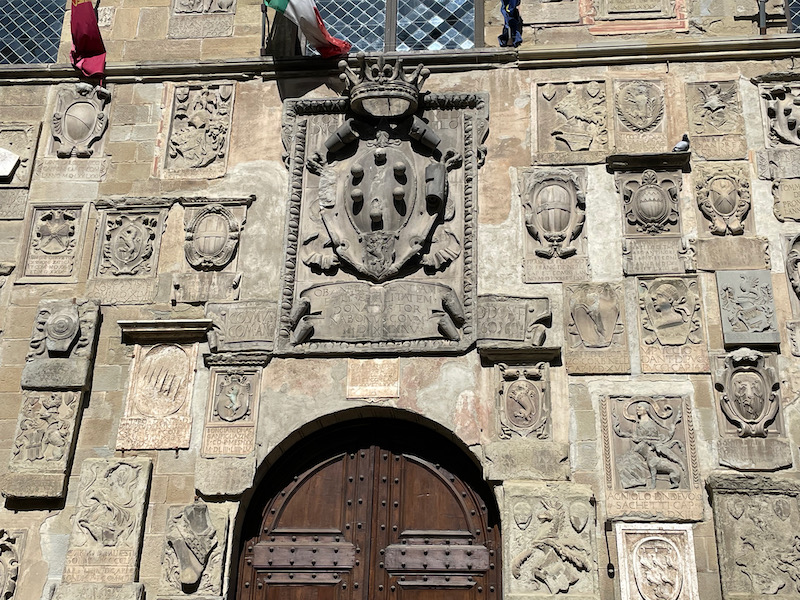
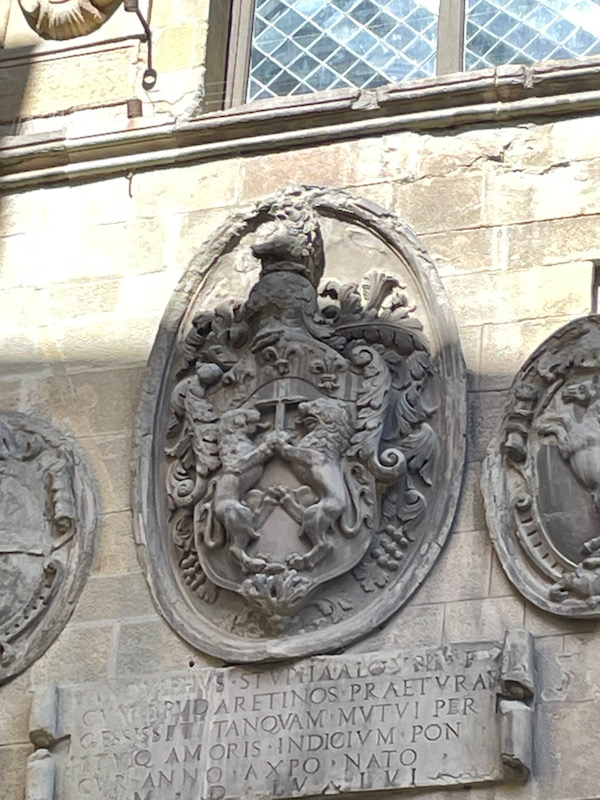
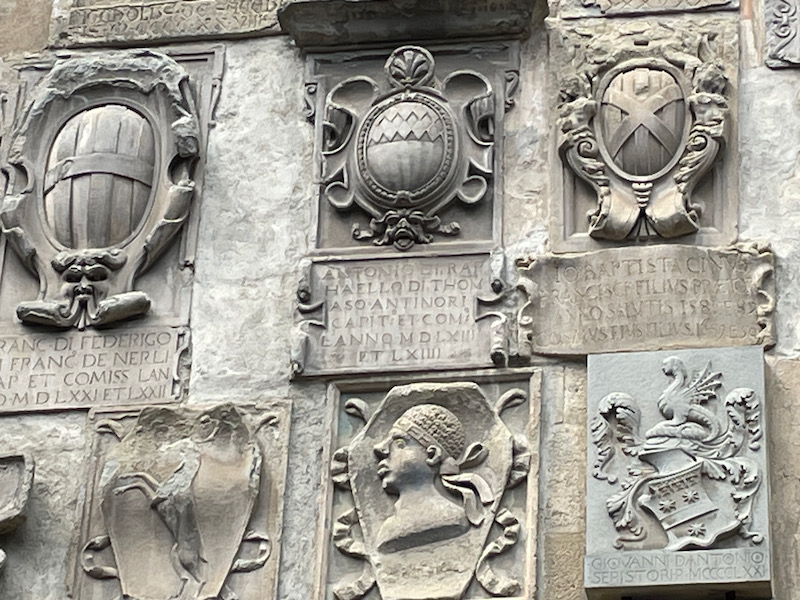
We made our way to Piazza Grande, which dates back to the Etruscan era. In the Middle Ages, it was used for the livestock market before becoming more of a central square. In 1560, the new "lord" of the area, as a show of strength, had multiple buildings demolished to build a new urban layout with the construction of the buildings around a new square, which became the political center of the city. One of the new buildings is the Palazzo delle Logge, was built in 1573 for Cosimo I de' Medici. You can see all fo the arches and the loggia's behind, which goes the entire length of the building. I also show a few other buildings (some with towers), and the back of the Parish Church of Santa Maria Assunta (which you will see later).
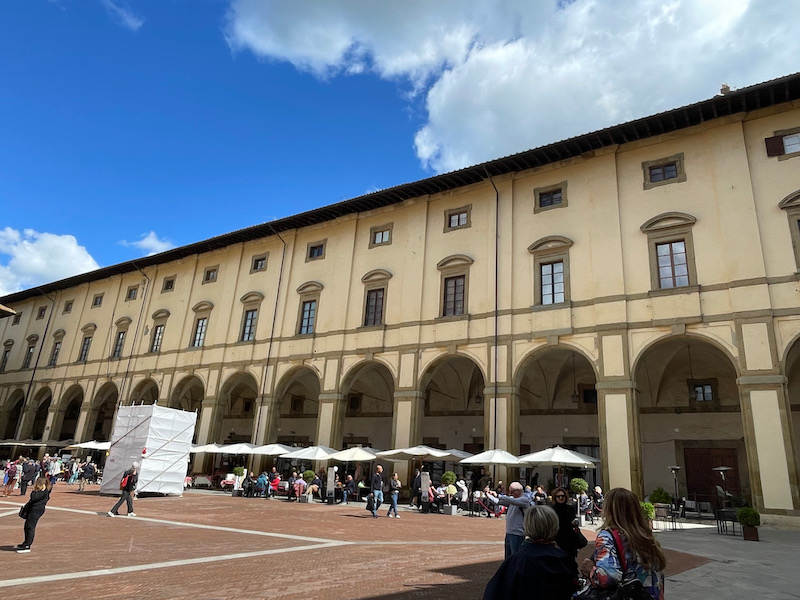
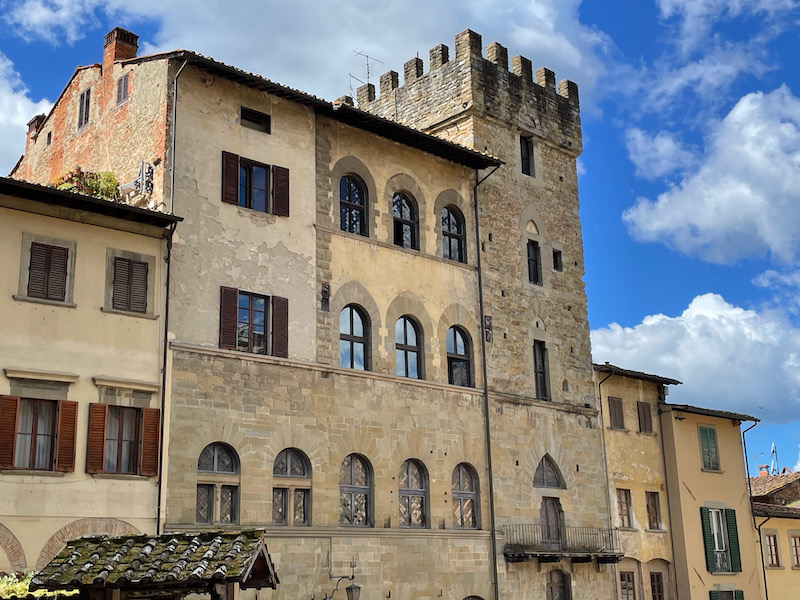
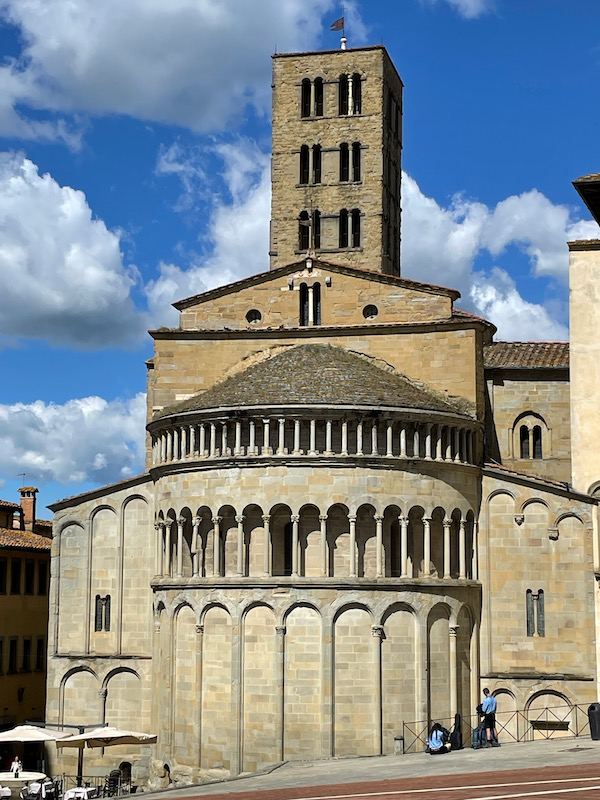
Another building on the square looks like it should also be a church, but in fact, it isn't. It is Palazzo della Fraternità dei Laici, a 14-15th century palace with a Gothic ground floor and a Renaissance style 1st floor. While not a church, you will see lots of religious decorations. In the ground floor, there are large Gothic windows (pointed arches) on either side of the door, above which is a lunette with a copy of the fresco Christ in Piety by Spinello Aretino. The next section above is a stone sculptural group of the Madonna della Misericordia with the saints Lorentino and Pergentino. Above that section is a loggia with the balustrade that was added in 1460. At the top is the bell tower with 3 bells and an astronomical clock. The astronomical clock is one of the rarest clocks in Europe. Made in 1552 and added to the bell tower, it shows the time but also astronomical data such as the position of the Sun during the day and of the Moon in the lunar calendar compared to the position of the Earth at the center of the Universe, according to the Ptolemaic conception of the 16th century. We didn't go inside to the museum.
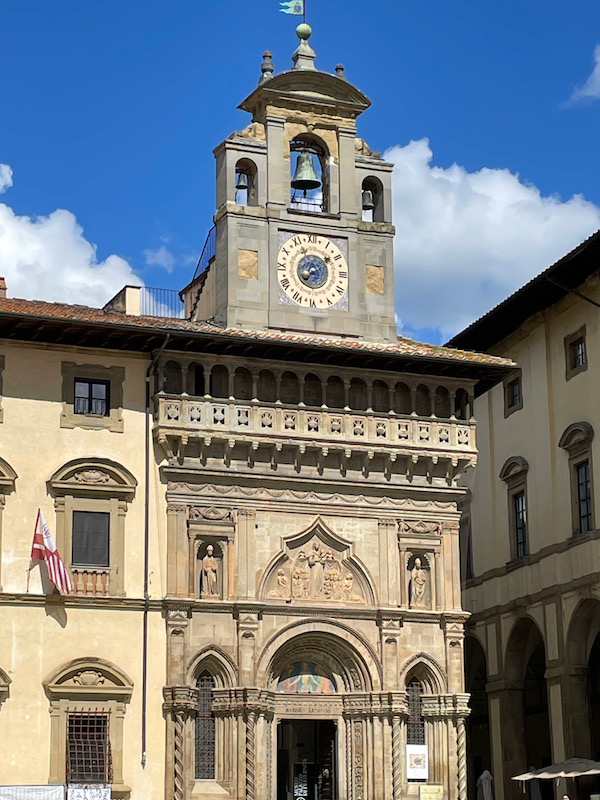
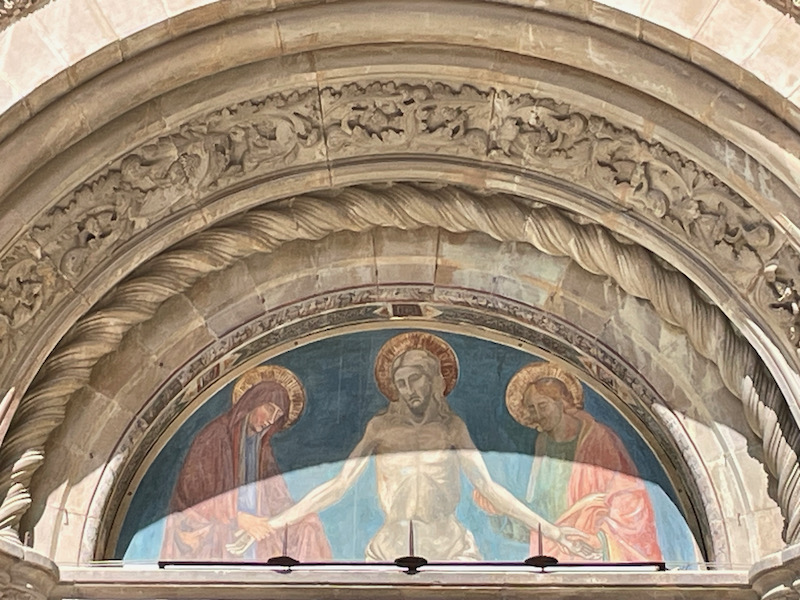
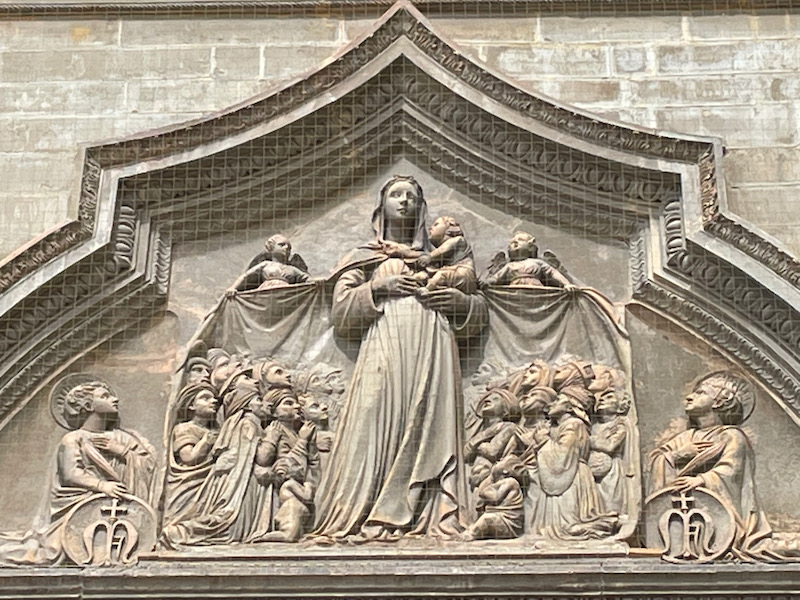
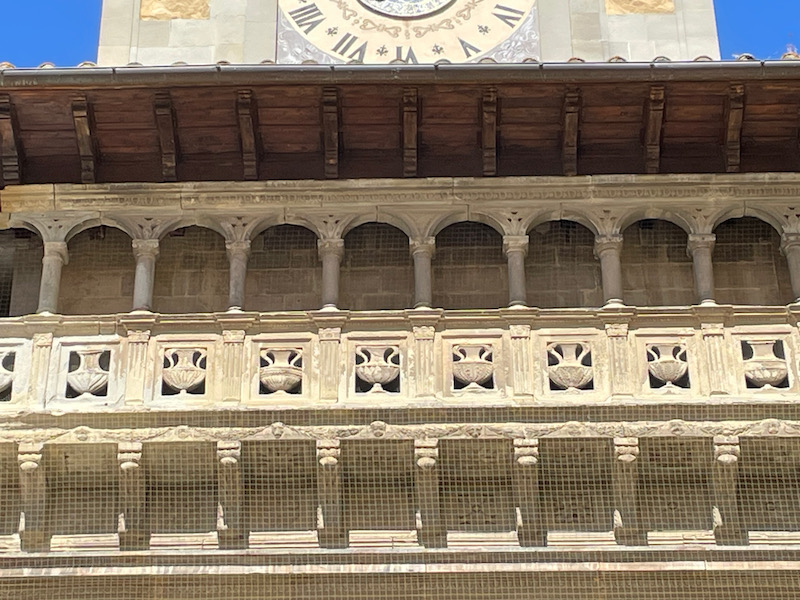
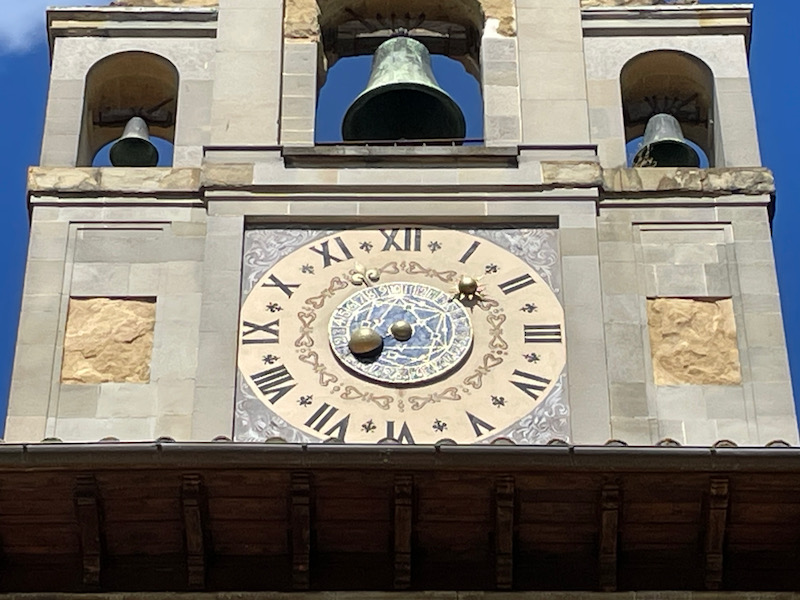
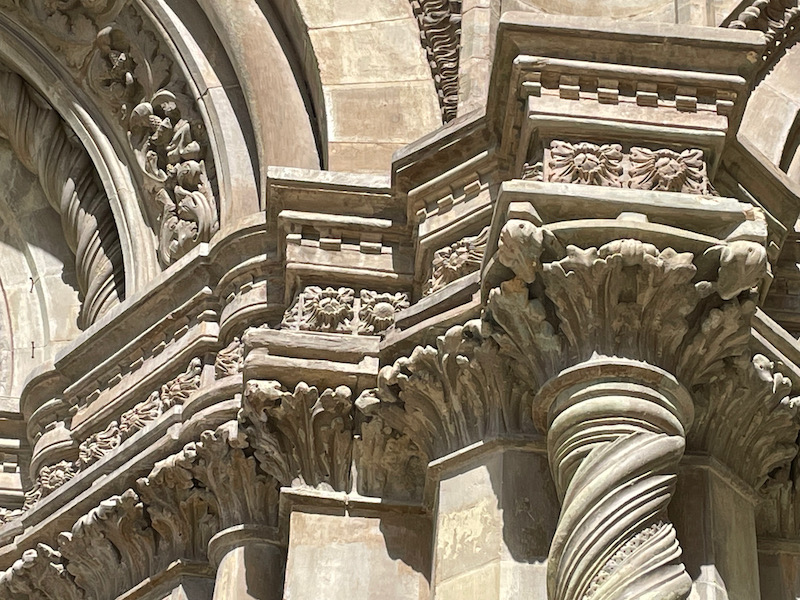
As we walked around, we saw lots of really nice buildings, former palaces of noble families from the 13th to 19th centuries.
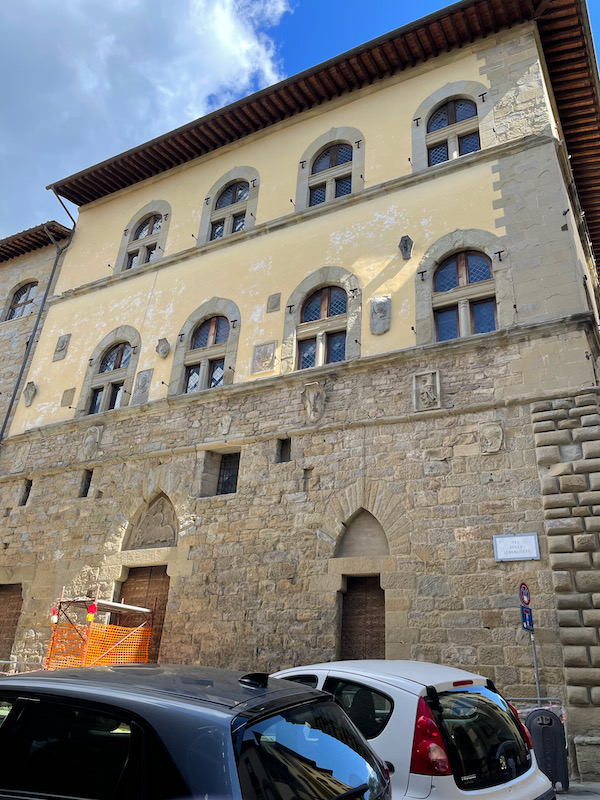
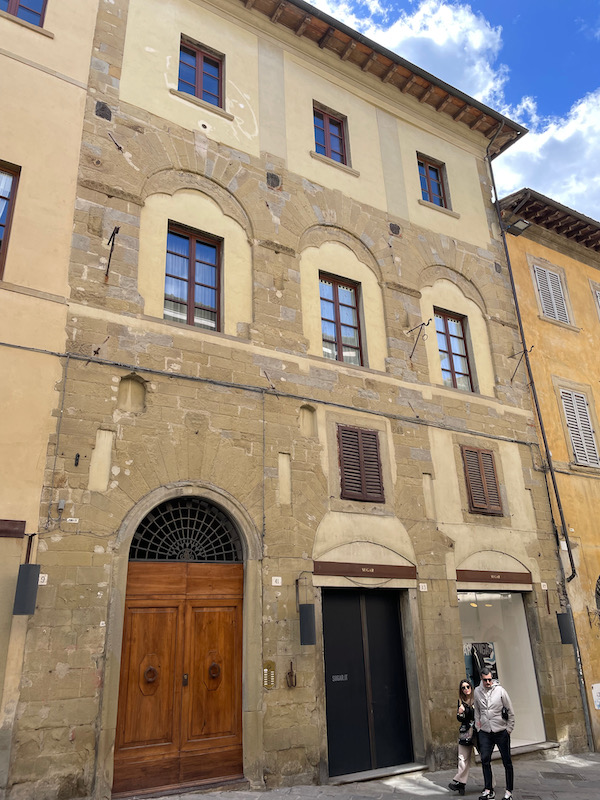
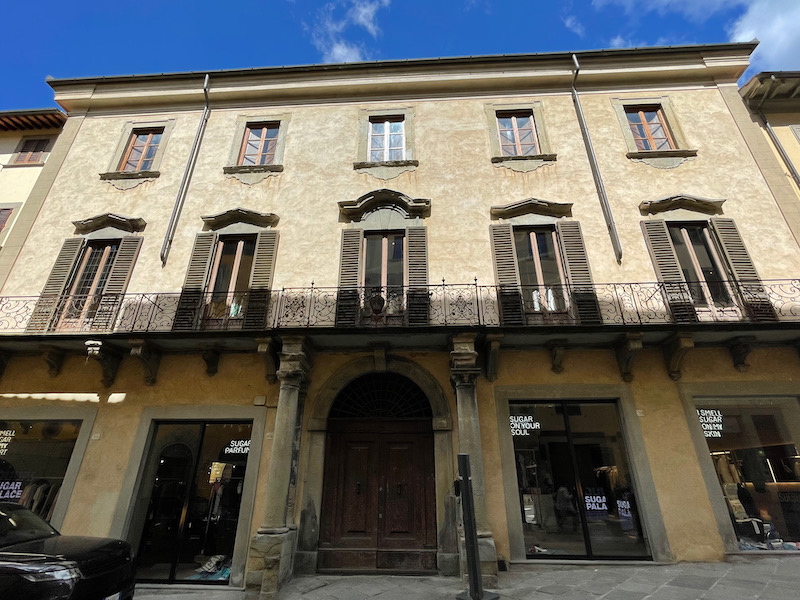
We saw the back-side of the Chiesa di Santa Maria della Pieve in the main square, and now we have come around to see the rest of the church. A church has been documented here since 1008 and then rebuilt in the 12th century and then again in the 13th century, giving it a Gothic look. The bell tower, finished in 1330, is in Romanesque style with 5 levels of windows.
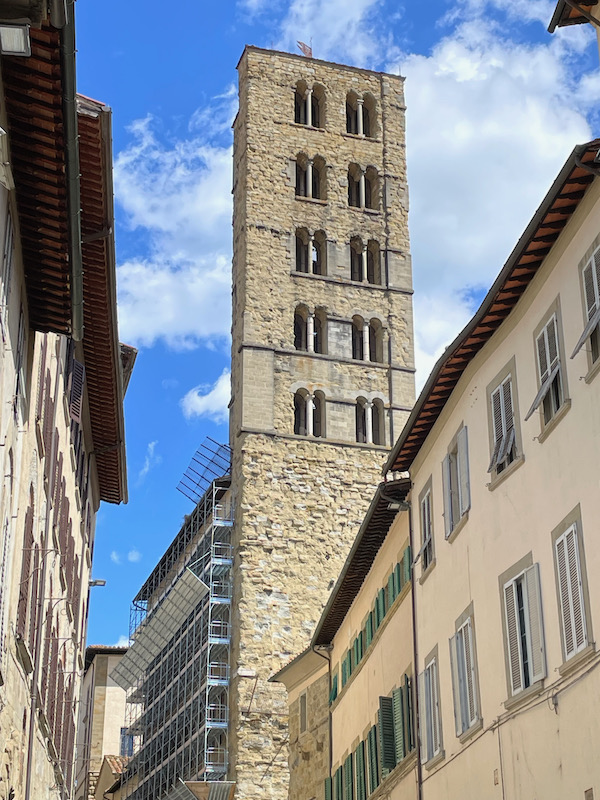
I can't show the façade because, as you can see from the picture above, it is totally covered by scaffolding. But I was able to get a couple half-way decent pictures of the central portal, with all these little figures.
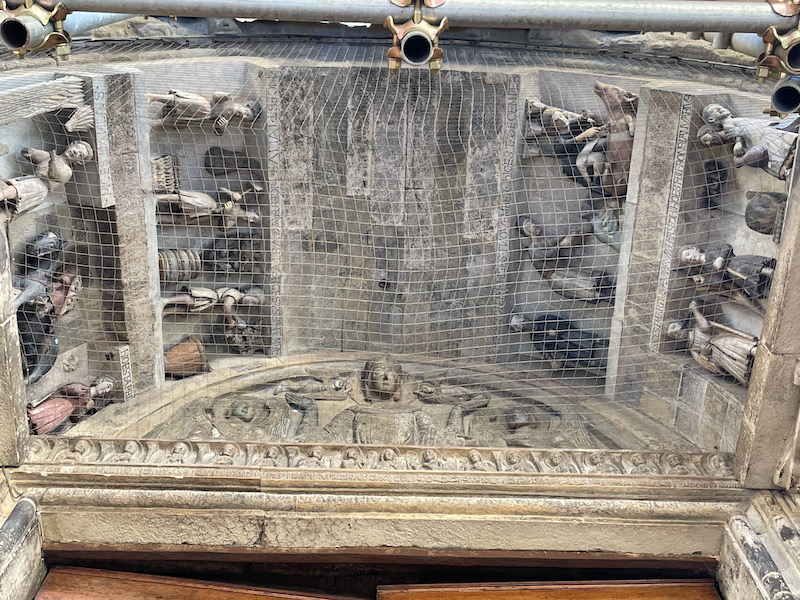
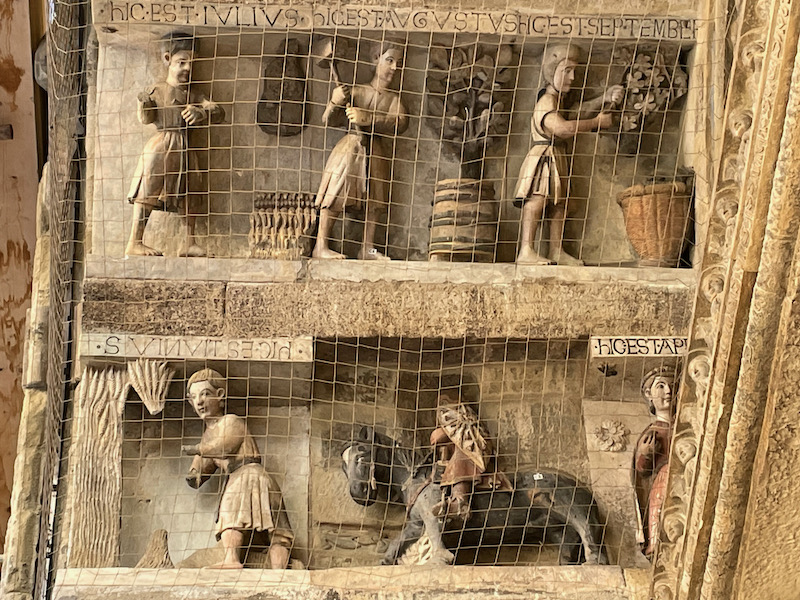
The interior is from the 13th century and you can see the very tall arches. Just inside the door, there is a baptismal font that dates to 1333.
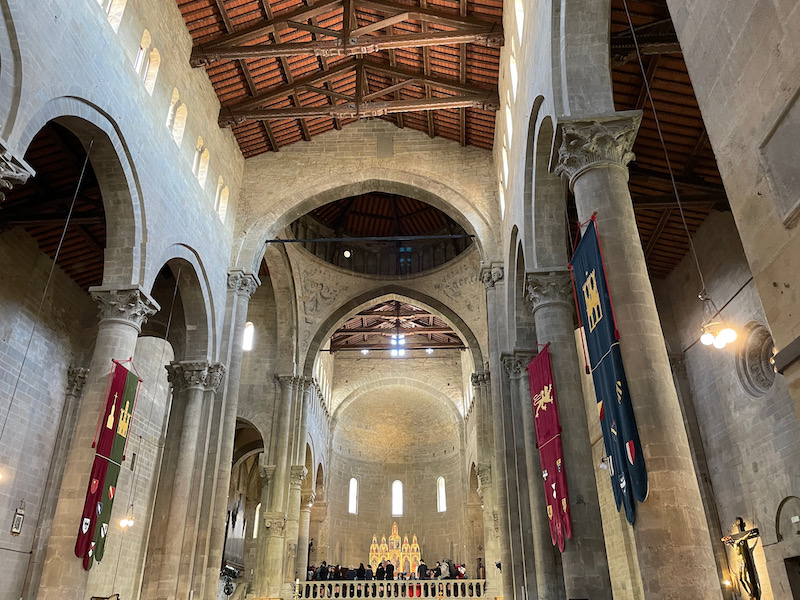
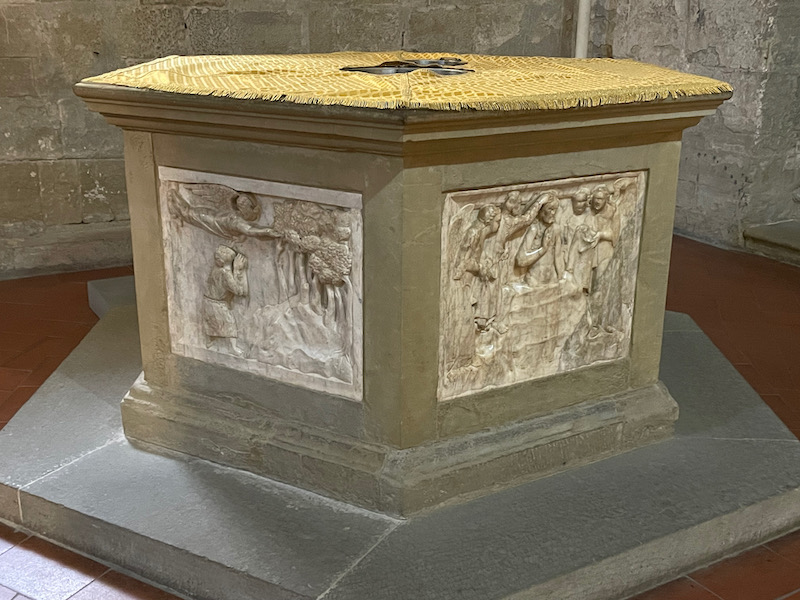
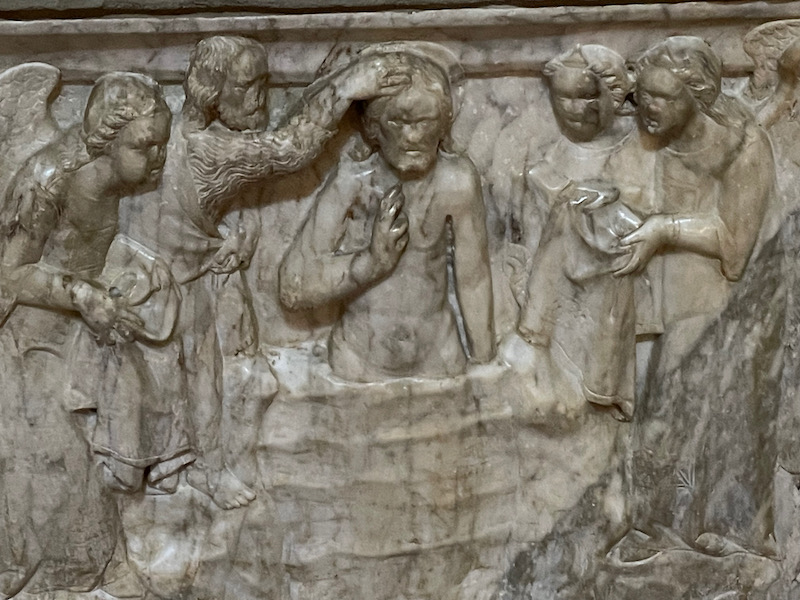
The crypt houses a reliquary bust of St. Donatus, created in 1346, which includes his actual skull.
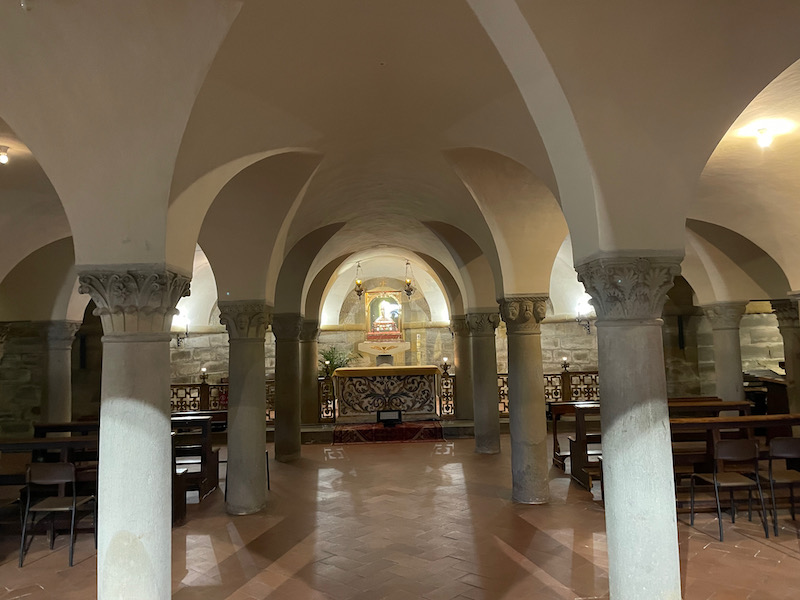
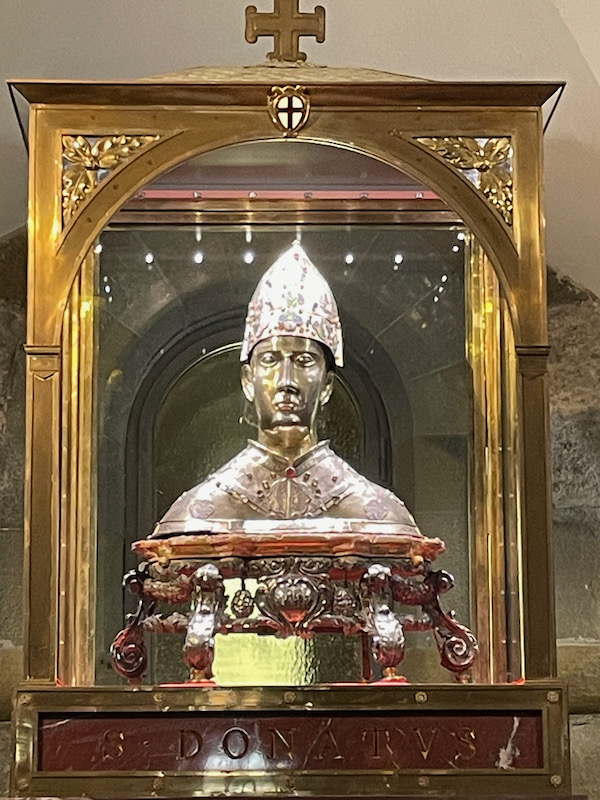
At the high altar is the polyptych representing the Madonna and Saints
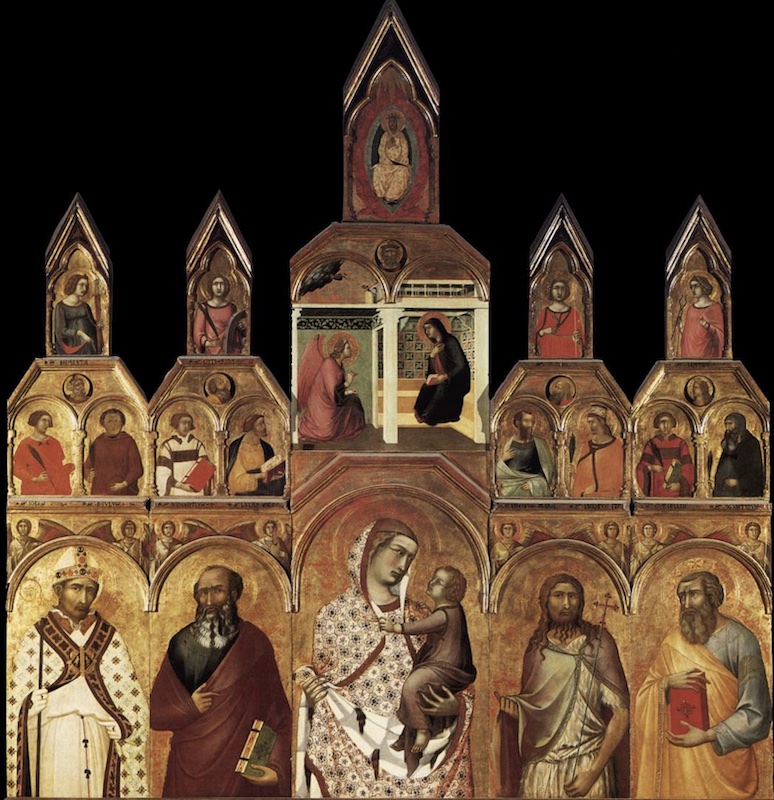
We then took an interesting passageway (with a set of escalators within a covered passageway) that took us from the top of the hill at the Cathedral down to the old city walls and the Porta Stufi.
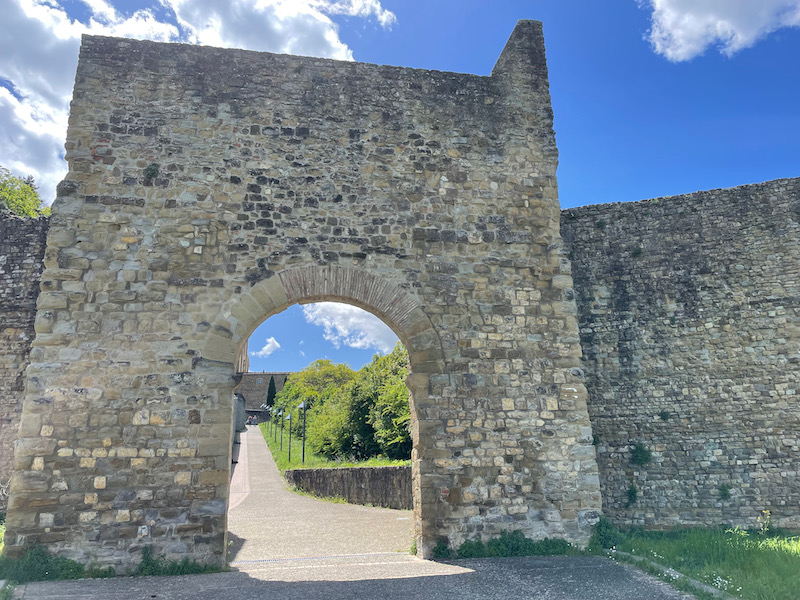
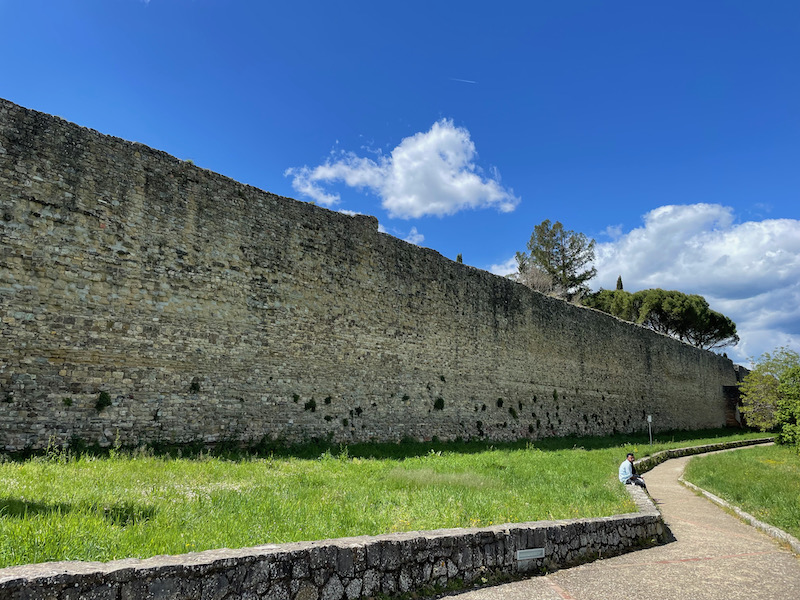
Coming back into the walls at the Basilica of San Domenico, whose construction began in 1275 and was completed in the 14th century. The exterior is a sober Tuscan Gothic style.
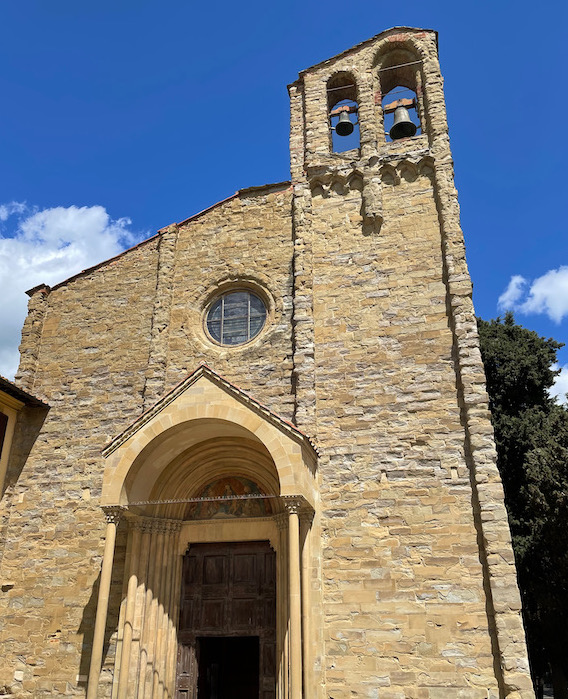
You can see the same type of wooden ceiling and black-and-white coloring as in other places. On the interior walls are late 14th-century frescoes depicting Life of Saints Phillip, James the Minor, and Catherine.
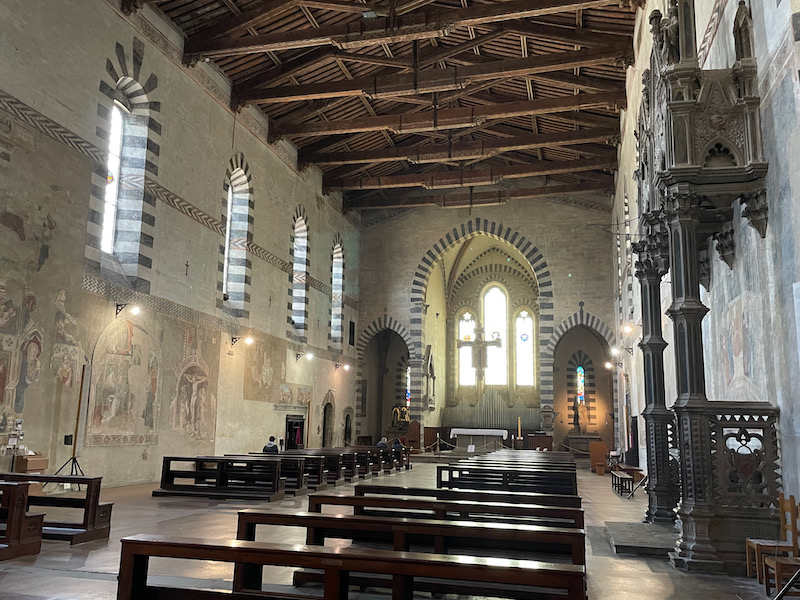
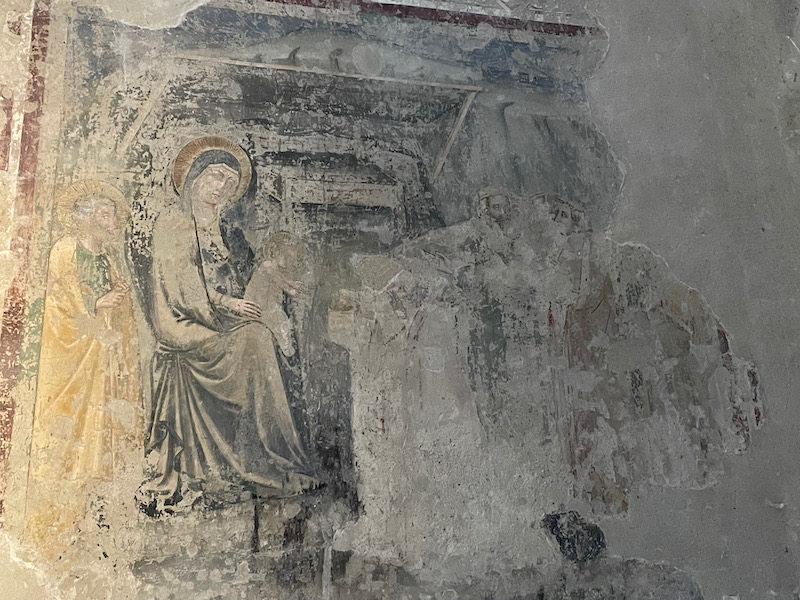
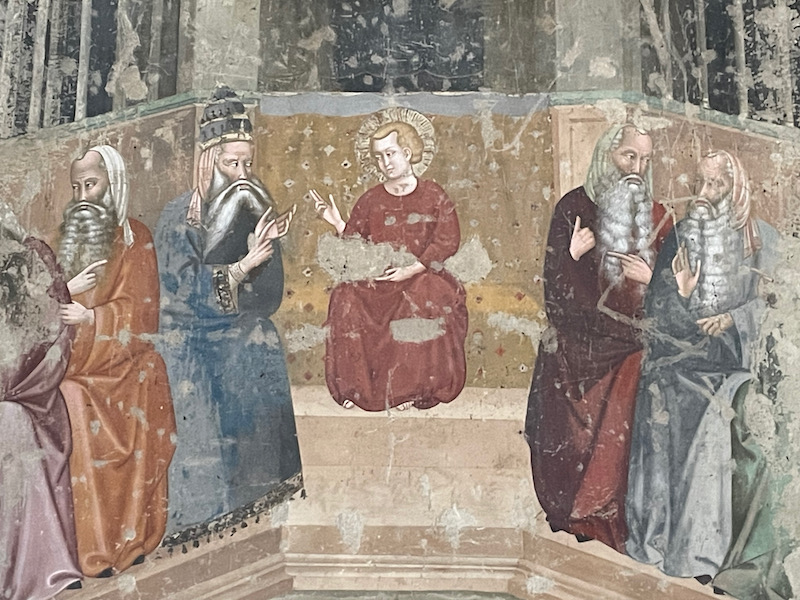
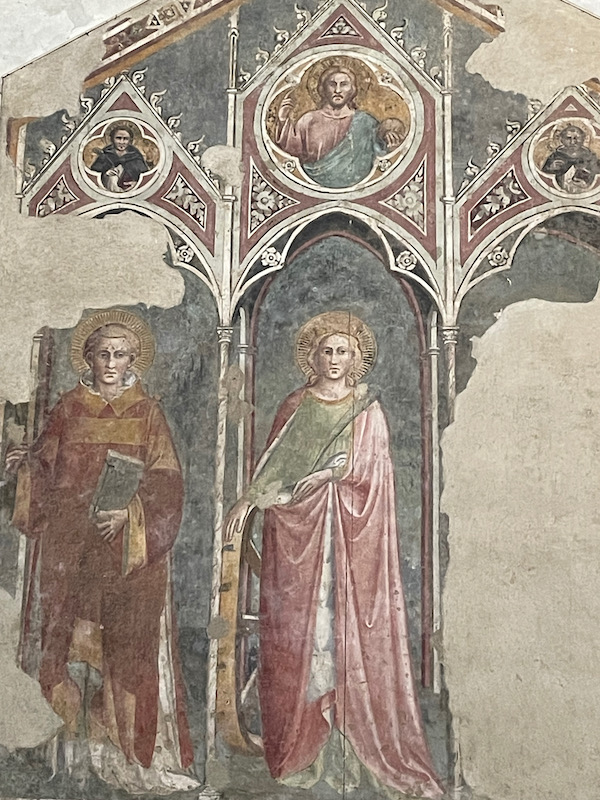
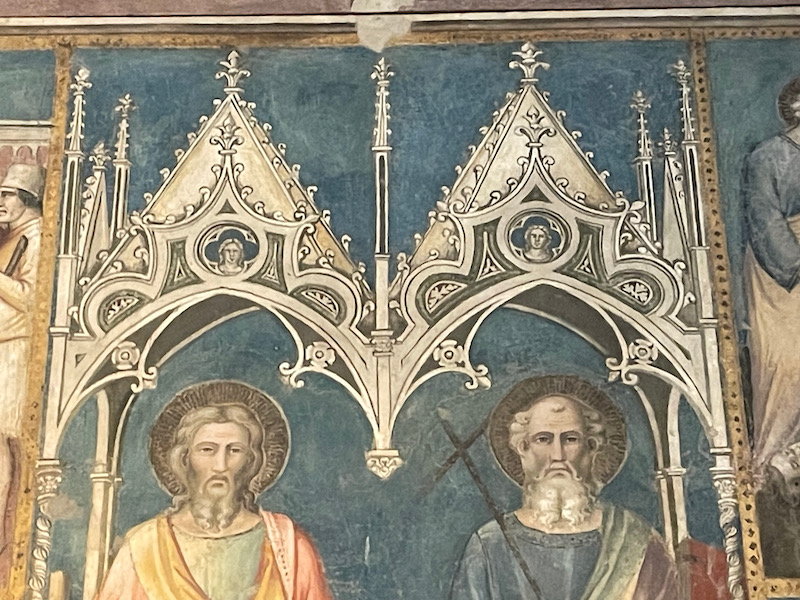
I hadn't planned to go into this one, but we decided to go inside since Lucy was sleeping at our hotel. This is called The House of Petrarca. I hadn't really thought much about Francis Petrarch until I was listening to a History podcast on the Renaissance and they mentioned that Petrarch's rediscovery of Cicero's letters is often credited with initiating the 14th-century Italian Renaissance and the founding of Renaissance humanism. So then as we were walking around, we saw this and remembered that podcast and decided to take a peek inside. The house is considered the birthplace of Francis Petrarch.
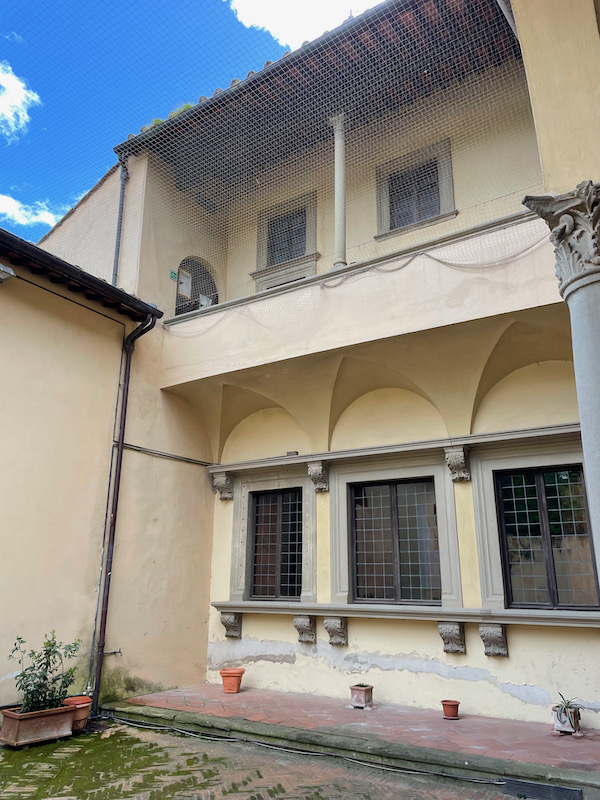
Inside is a collection of books, paintings, as well as a collection of 250 ancient coins.
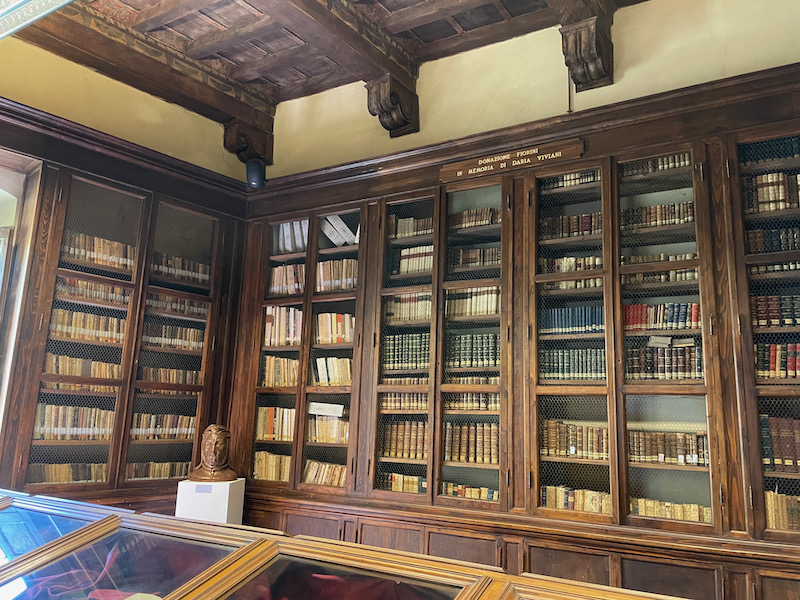
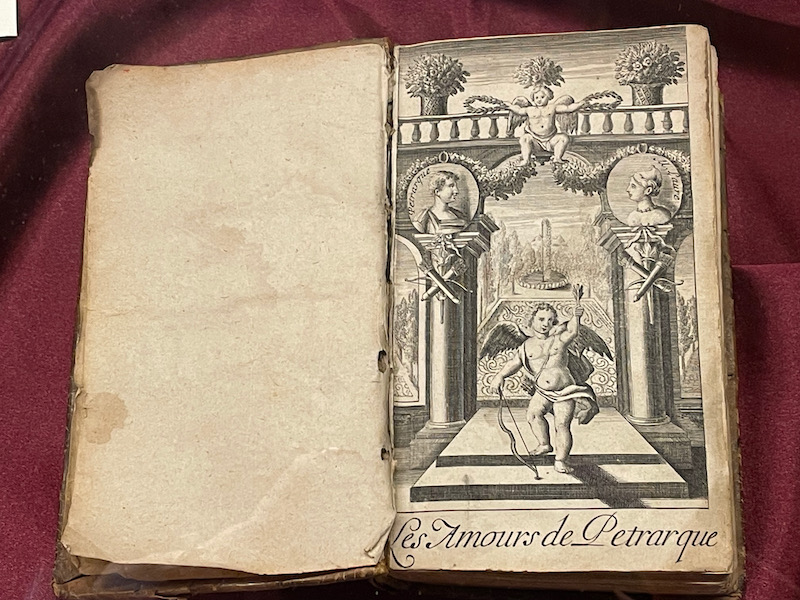
The coins were a bit interesting for me, so I had to so some research on them. Obviously, there are coins that date back to the Etruscans and Romans. But Italy was divided for centuries into many different states, and each had different coins, just until the country was unified in 1861. Here we see coins from the Romans (Emperors Augustus and Caligula, and then a coin from the city of Lucca.
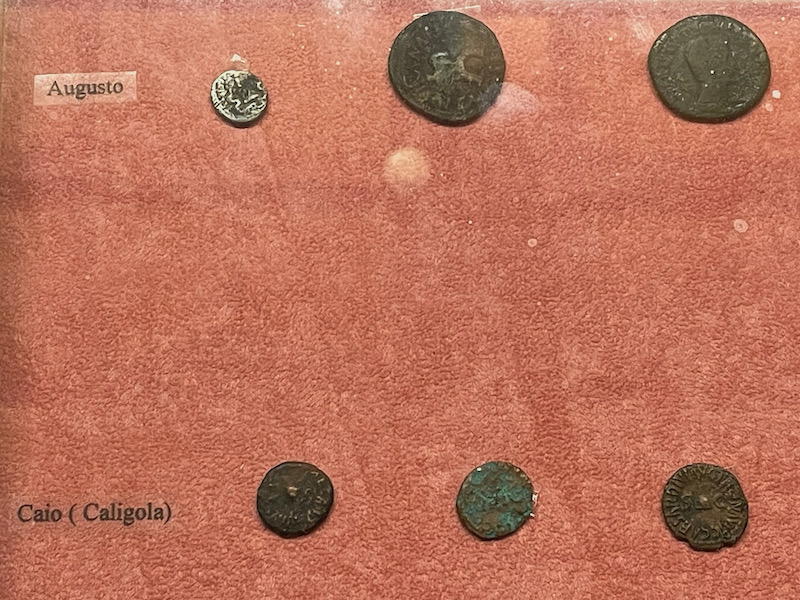
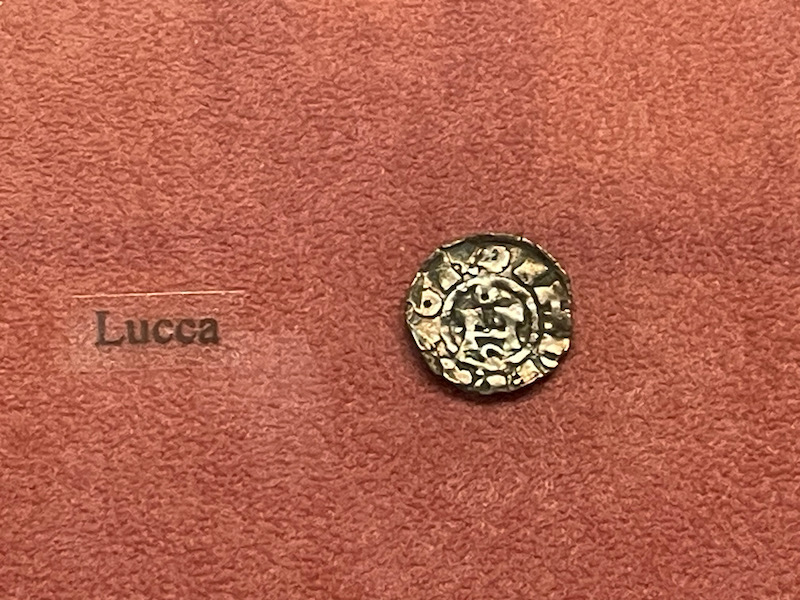
In almost every town, there is a street named for Dante Alighieri, and even here, there was a book entitled "Dante e Arezzo" (Dante and Arezzo). Normally just known as Dante, he was a poet, writer, and philosopher best known for his narrative poem, Divine Comedy. Supposedly, Dante was friends with Petrarch's father.
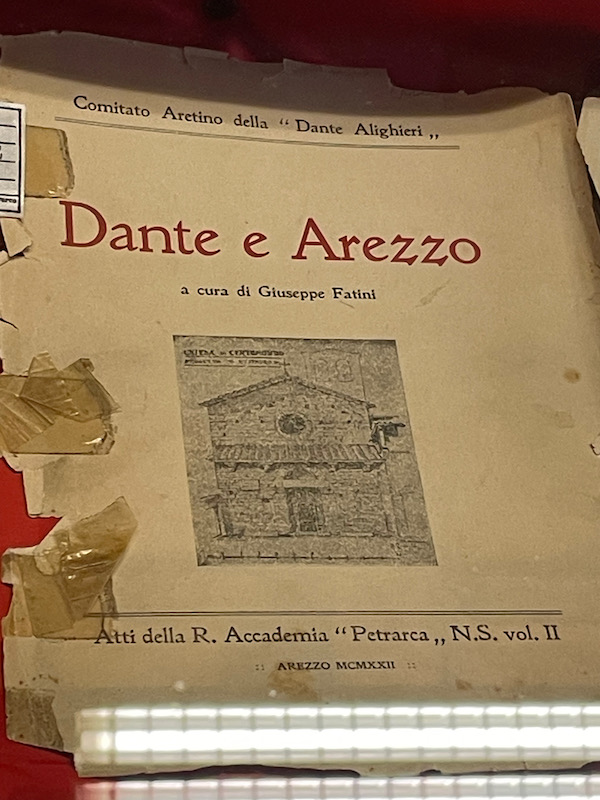
While this looks like biscotti ... it is, in fact, cantucci. We are in Arezzo, which is Tuscany, and therefore, it is called cantucci. They are twice-baked, oblong-shaped, dry, crunchy, and served (normally) with Vin Santo, which is a sweet wine that you dip the cantucci into. We made cantucci in our cooking class in Siena, so I will have to try to make these at home as well.
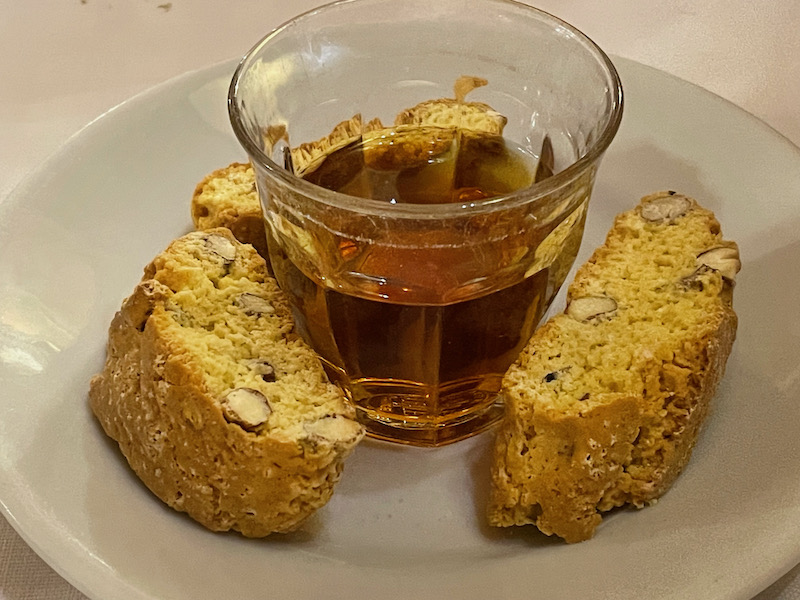
I have left the Arezzo Cathedral for last because I have pictures from 2 different days as the first time we went, they were having services and we had to come back later (I don't like walking around while a service is going on. The first cathedral was built on nearby Pionta Hill, over the burial place of Donatus of Arezzo, who was martyred in 363. In 1203, Pope Innocent III had the cathedral moved within the city's walls and the current building was built in different phases from 1277-1511.
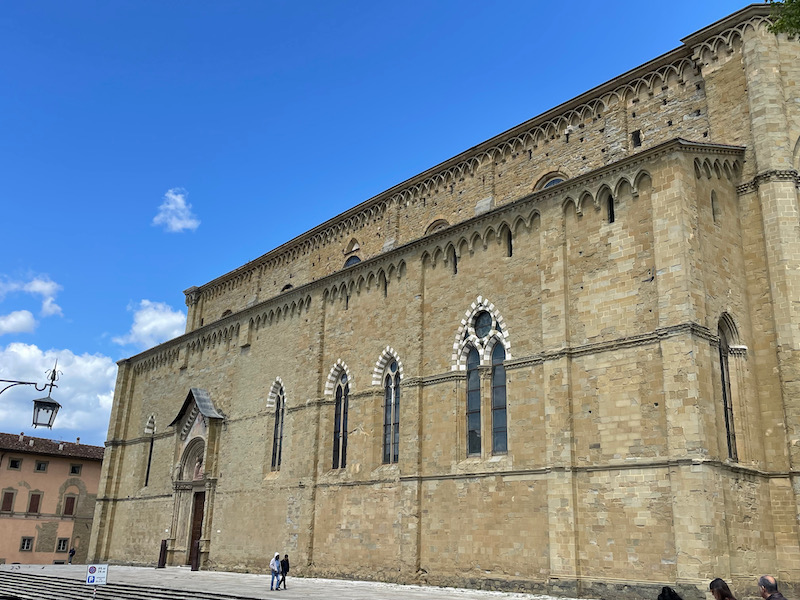
Inside is a nave and two aisles divided by piers with arches. One of the most impressive parts of the church for me was the painted vaulted ceiling.
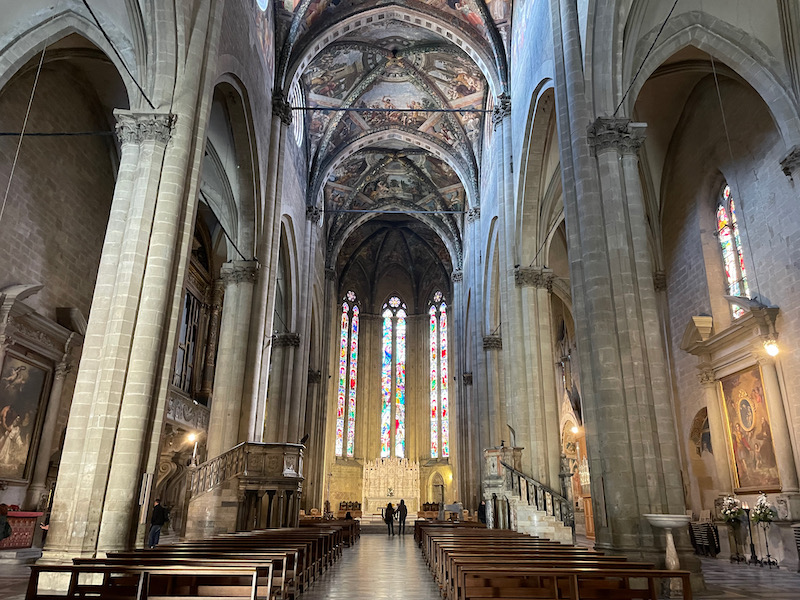
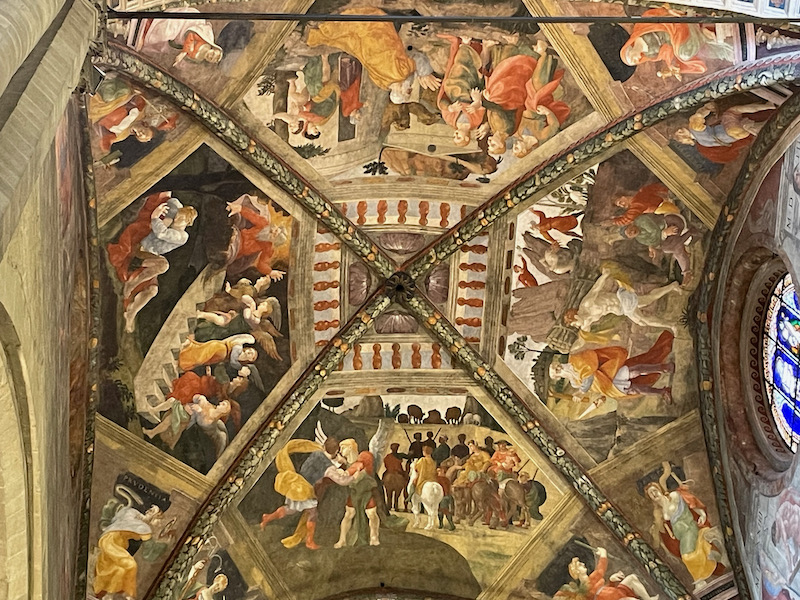
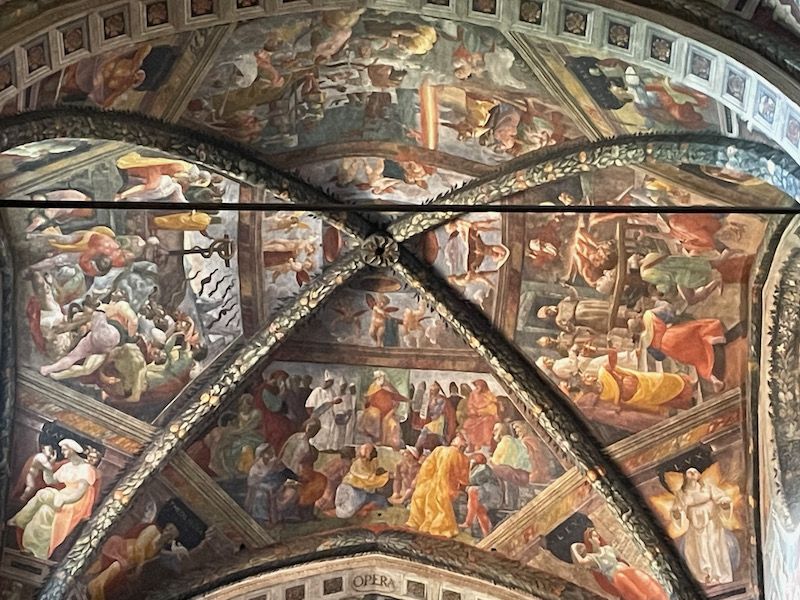
There are 2 pulpits made of different colored marbles.
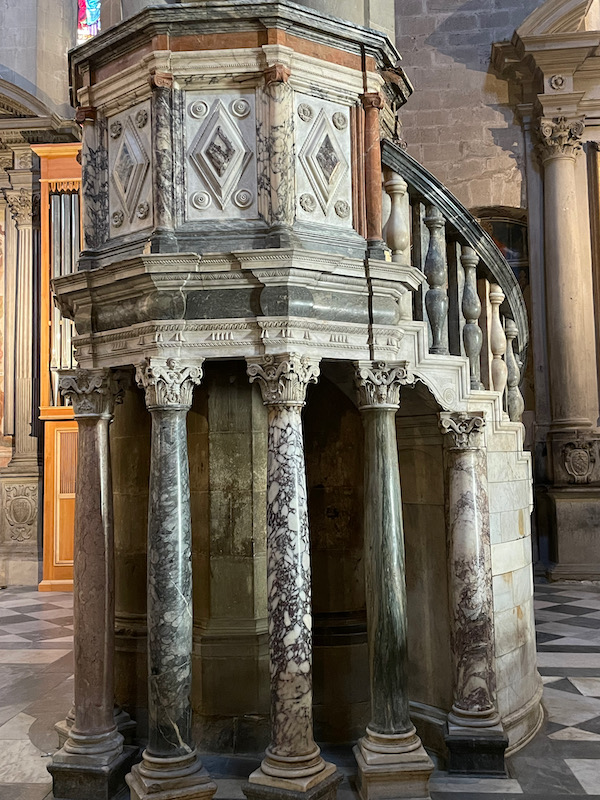
This is a fresco showing Madonna and Child among 6 stories from the lives of Saints Christopher and James the Greater from the second half of the 14th century.
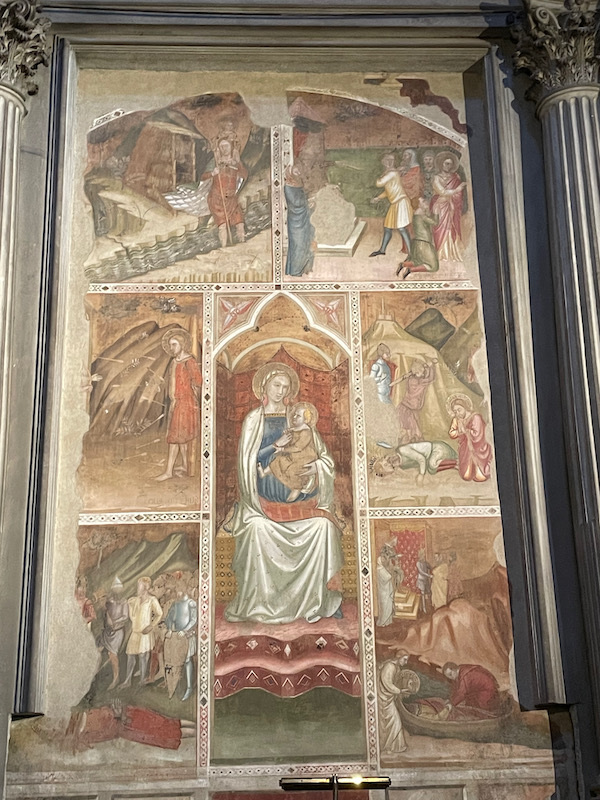
In the center of the apse is the high altar, dating back to 1289. The altar itself is less than impressive but behind it is the Ark of San Donato, an extraordinary marble work from 1362. It was built in memory of Bishop San Donato, a martyr who died in Arezzo in 363 and patron of the city.
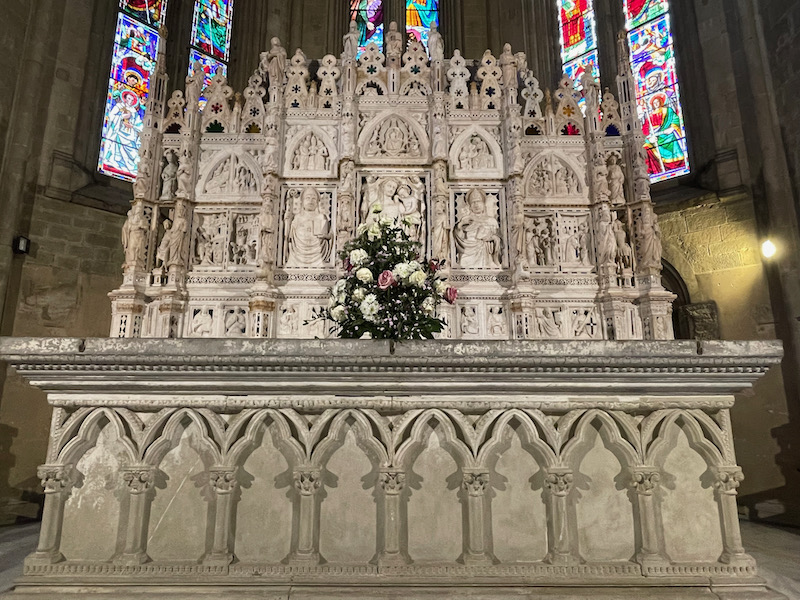
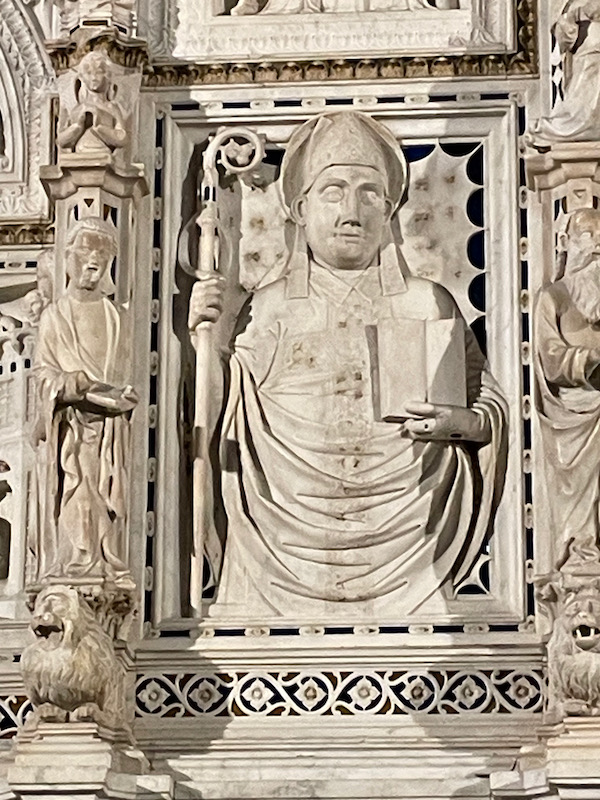
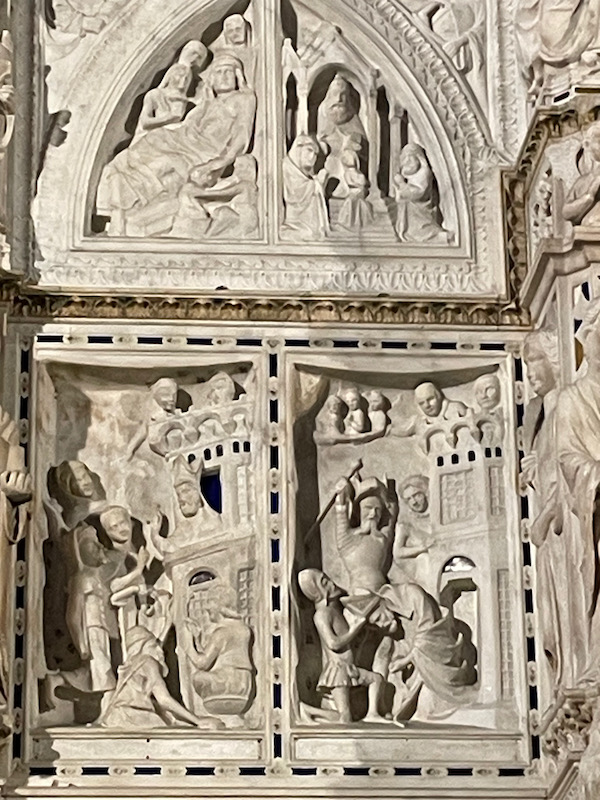
This fresco is from around 1459 and shows Saint Mary Magdalene portrayed with her long hair worn loose, holding a container of ointments that she would then rub on Jesus's body in the Sepulchre.
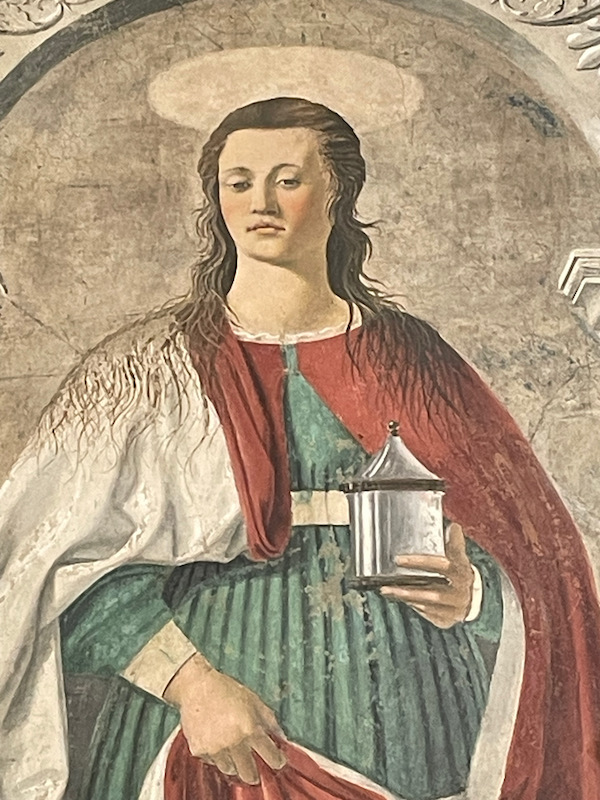
Last pictures are from the cenotaph of Guido Tarlati, bishop and lord of Arezzo who died in 1327. It is really large, with a series of 16 narrative bas-reliefs with episodes of his life accompanied by explanatory writings, done in 1330.
